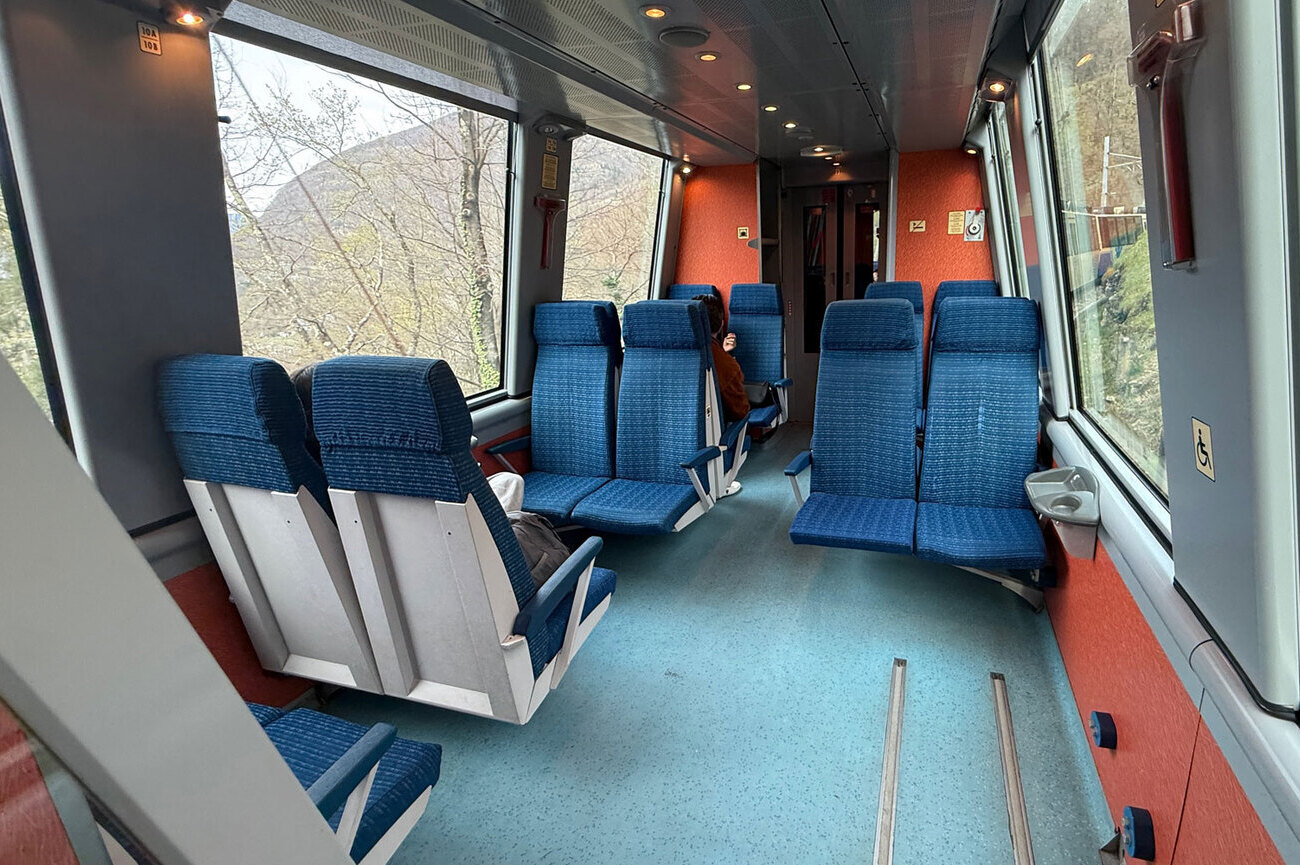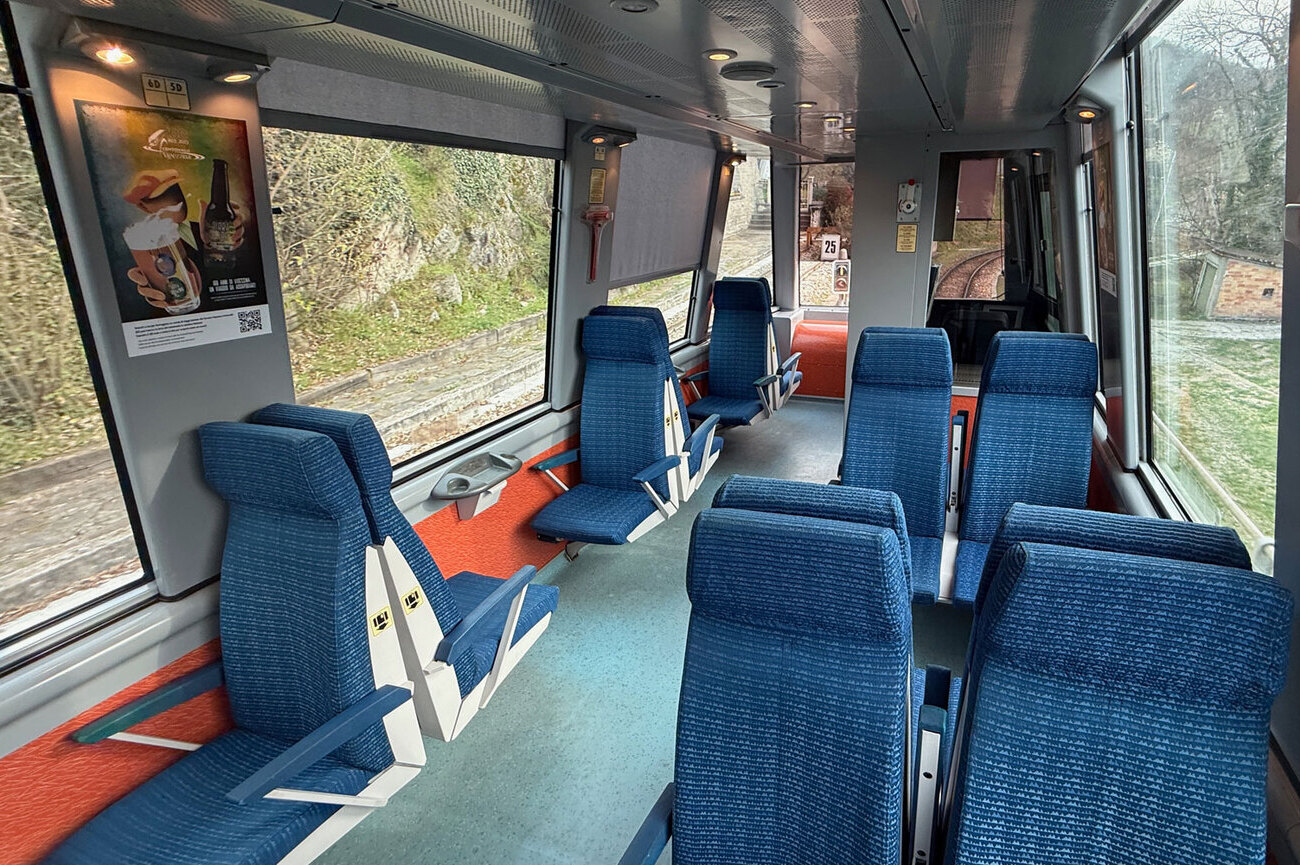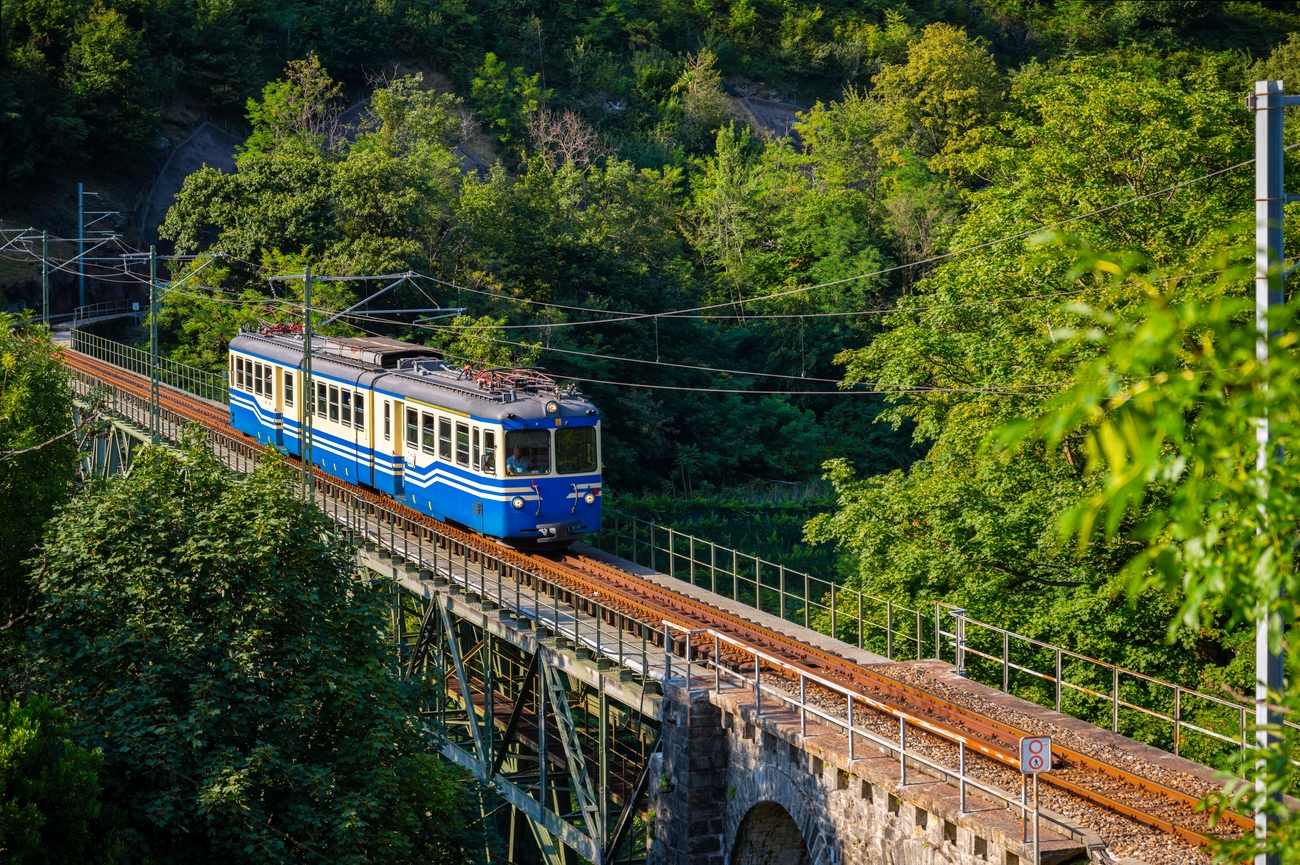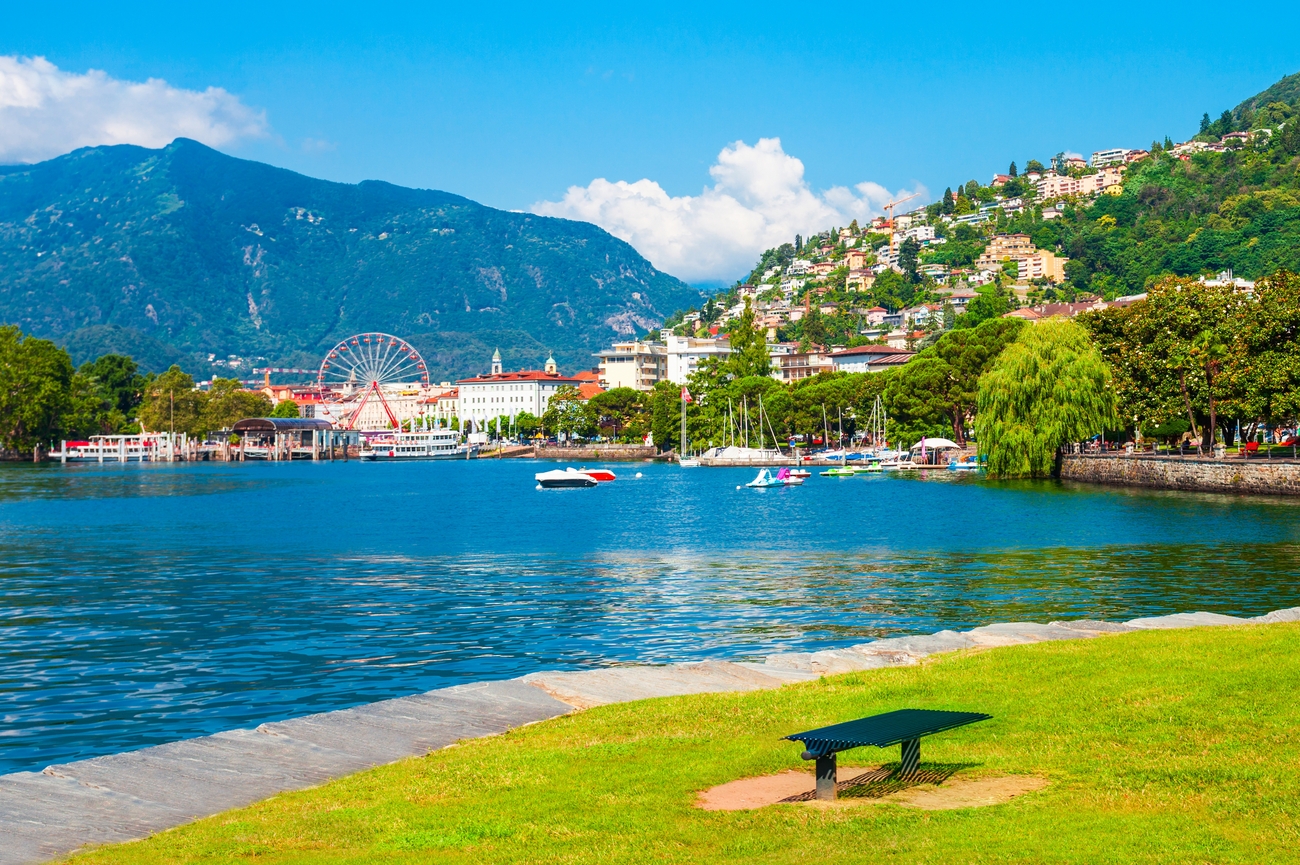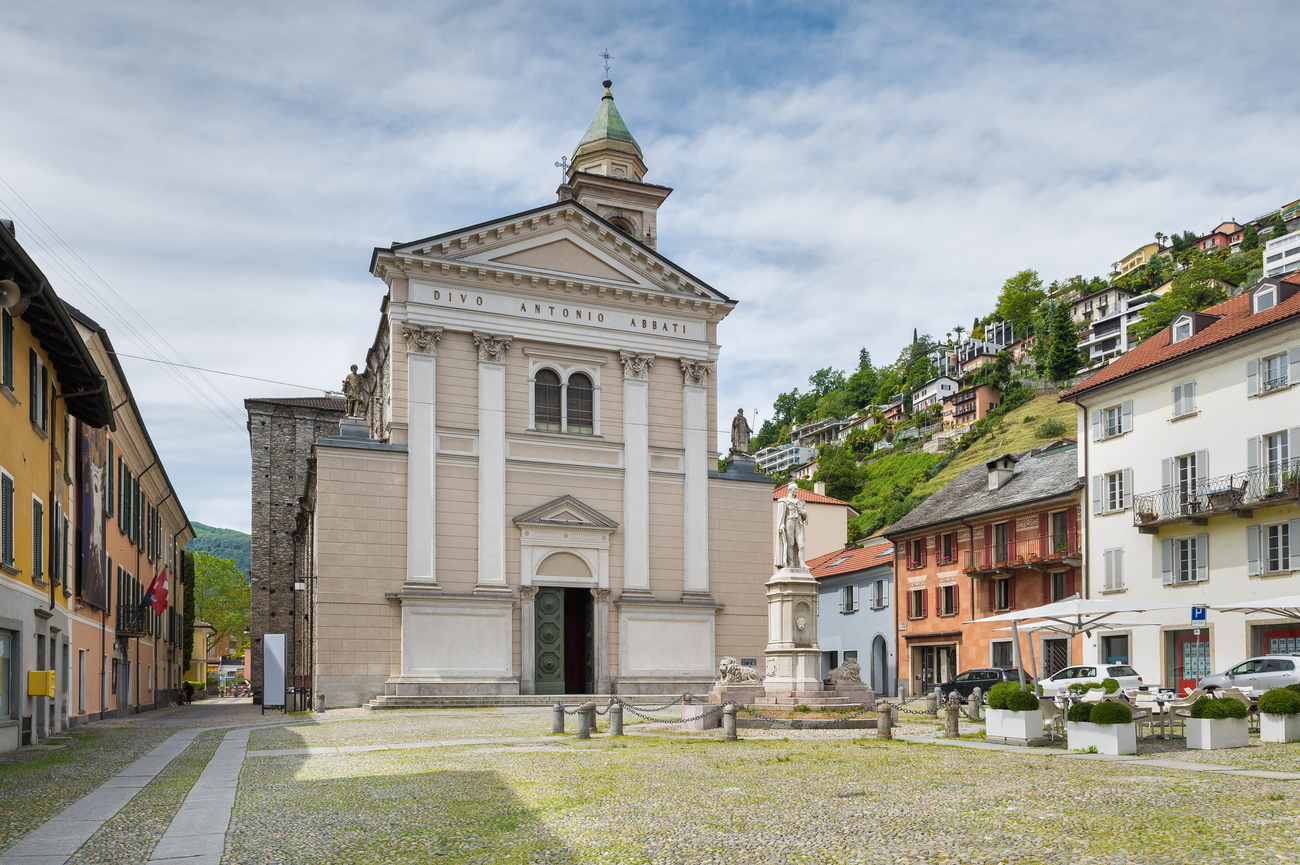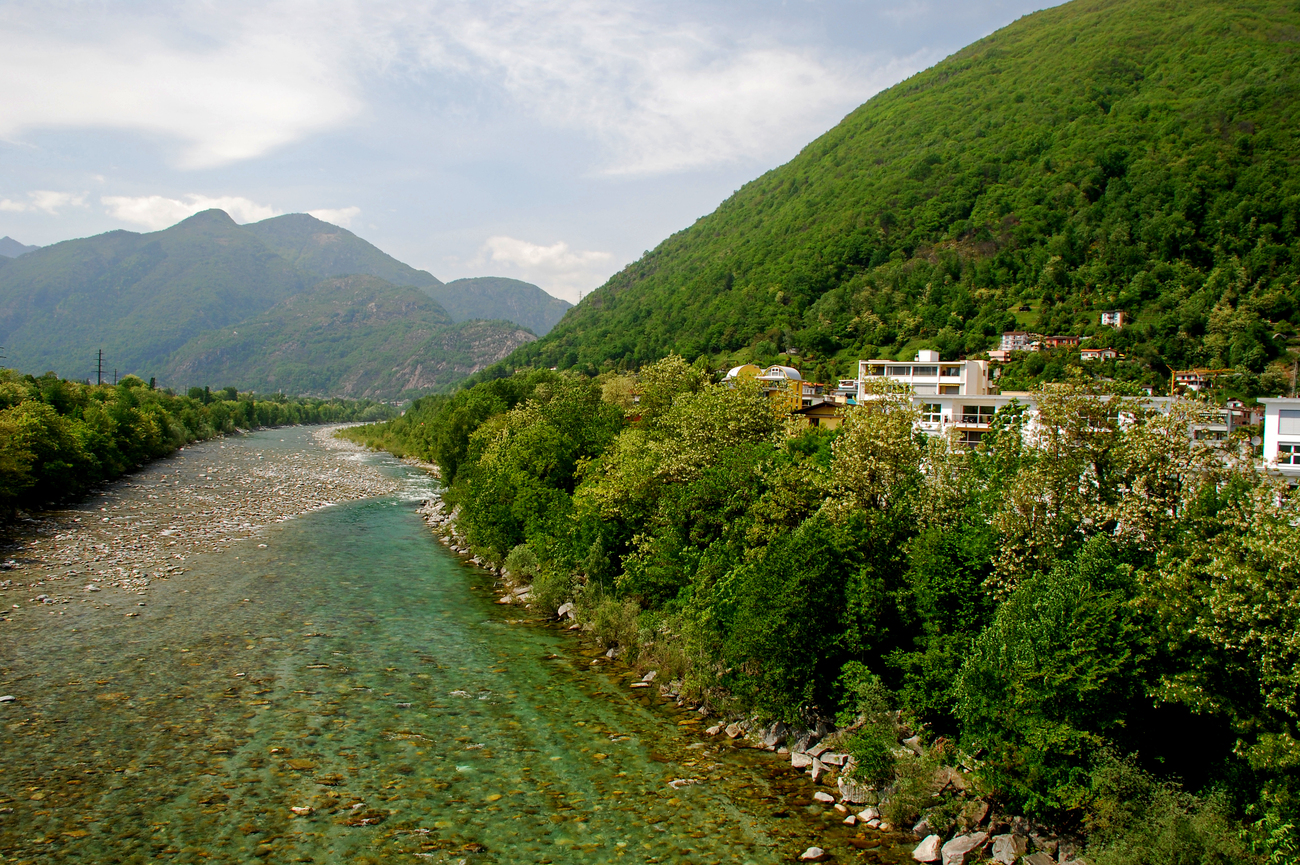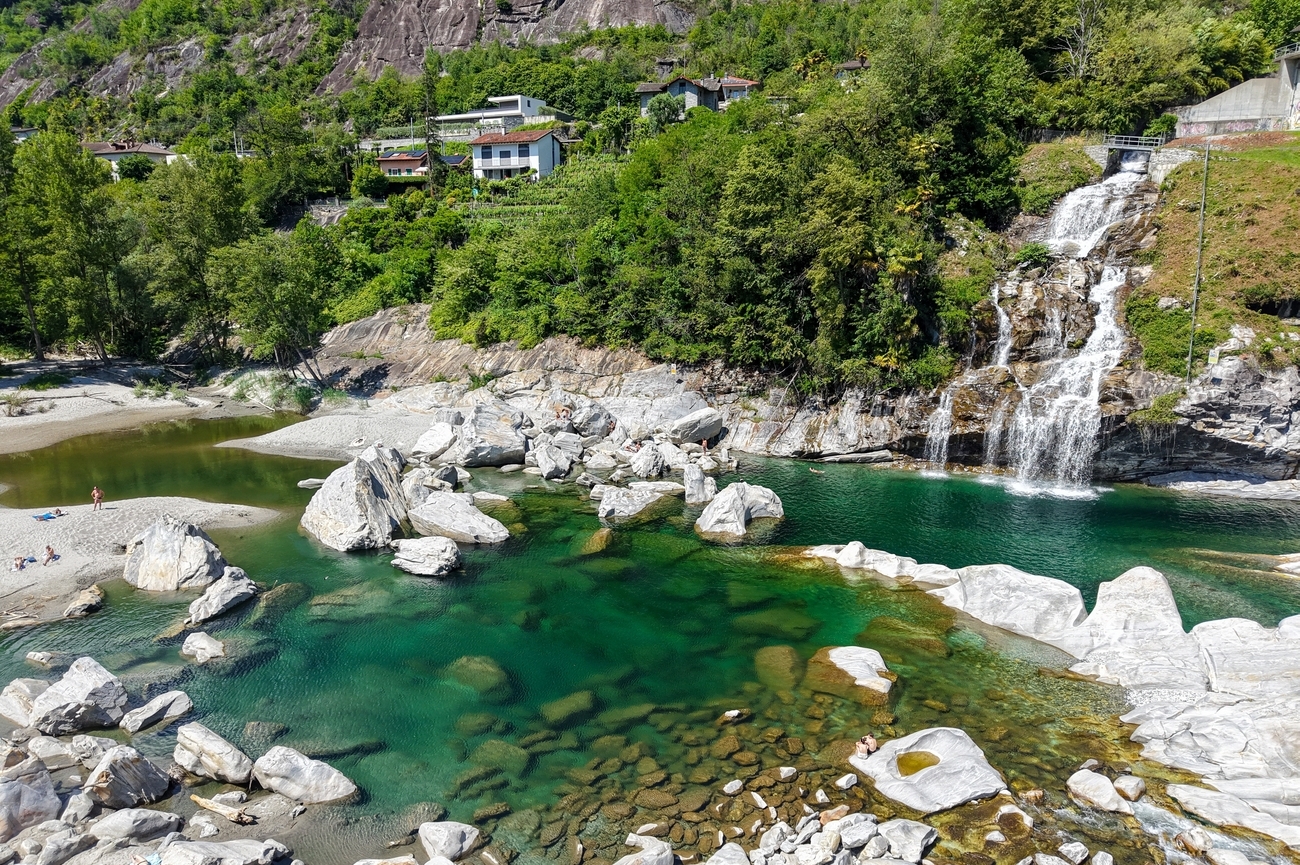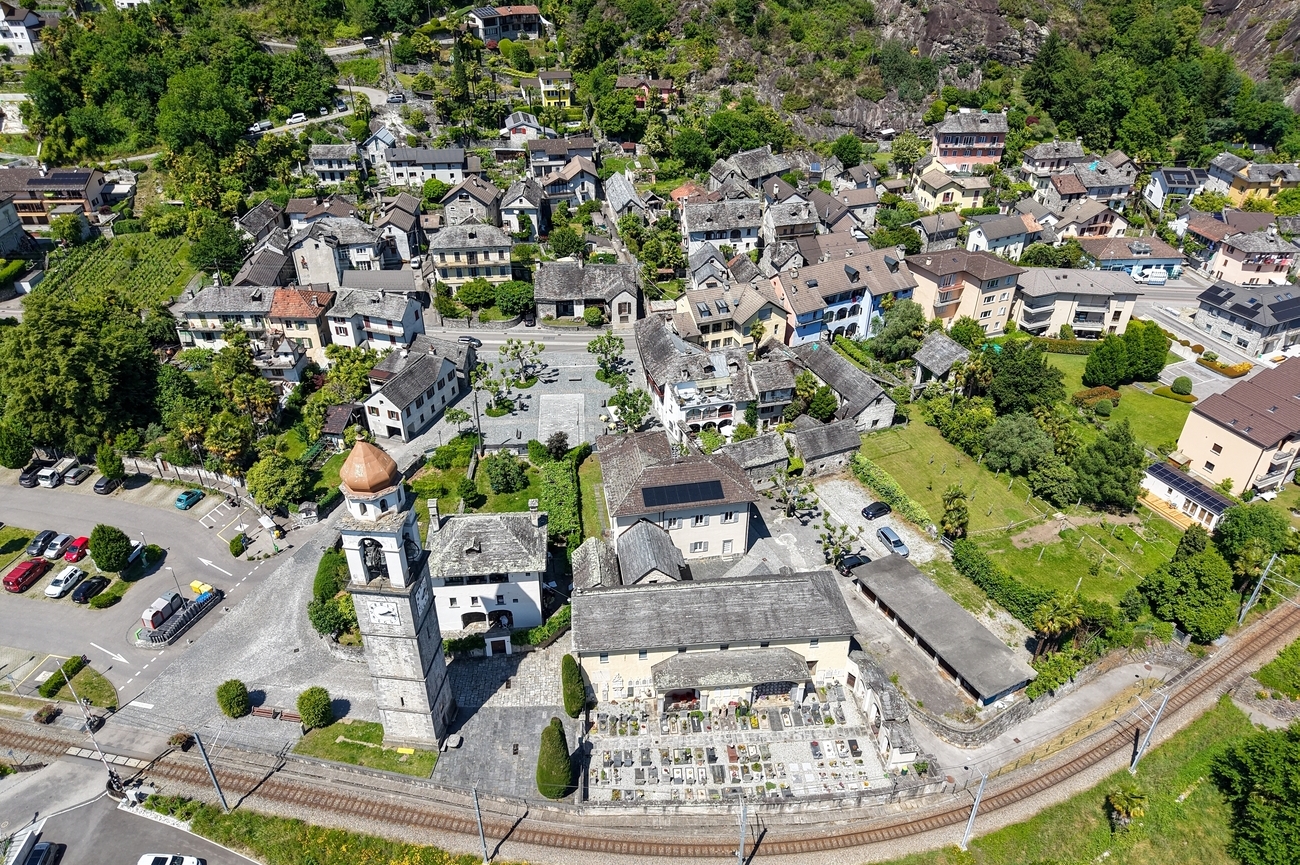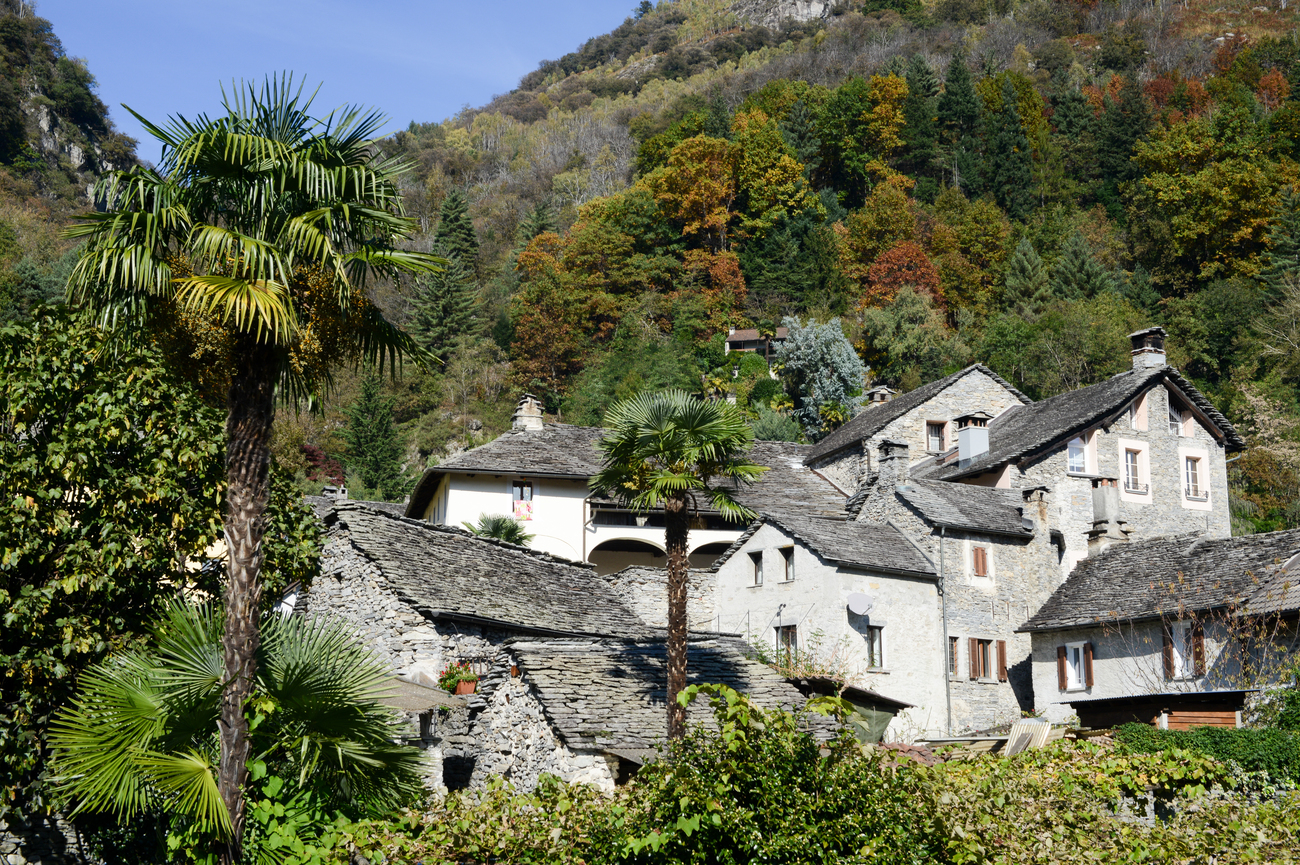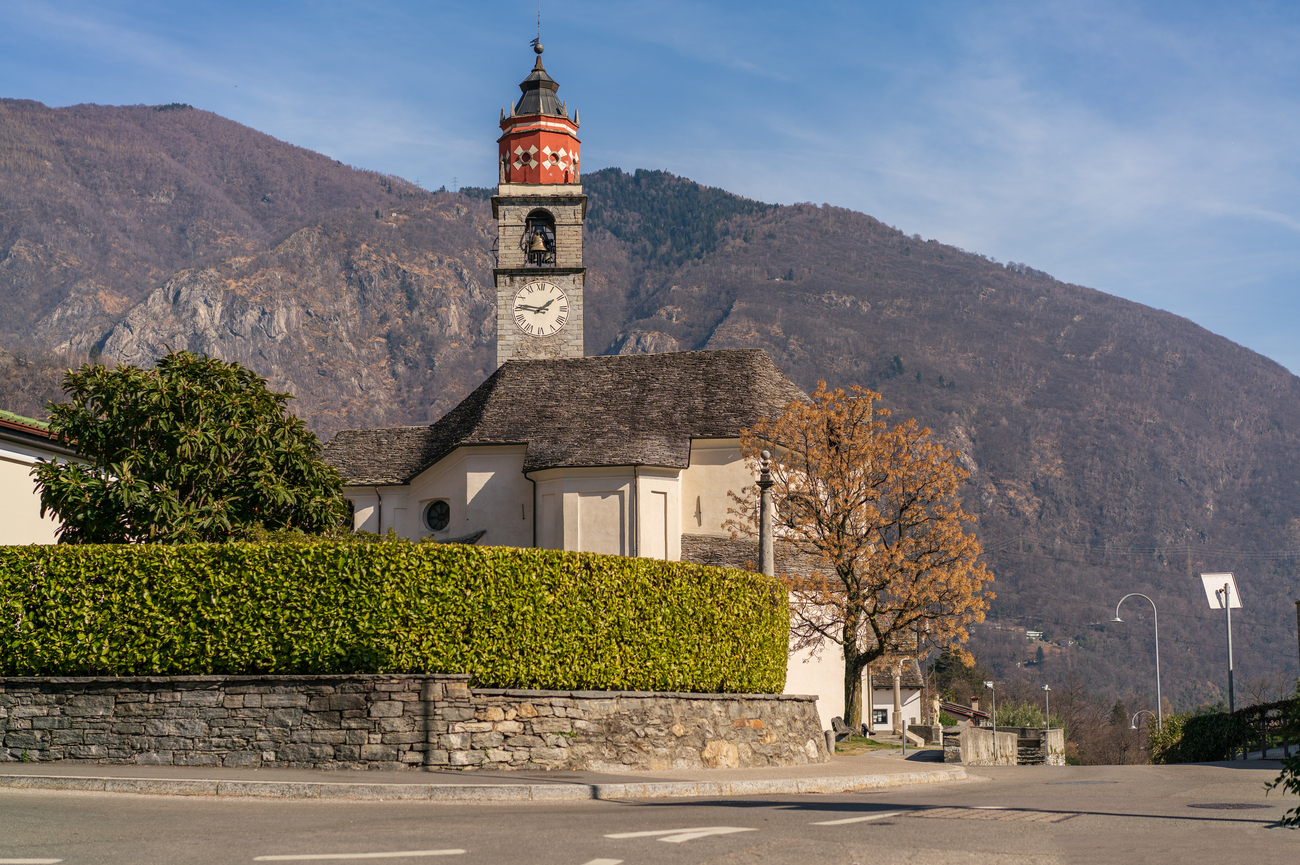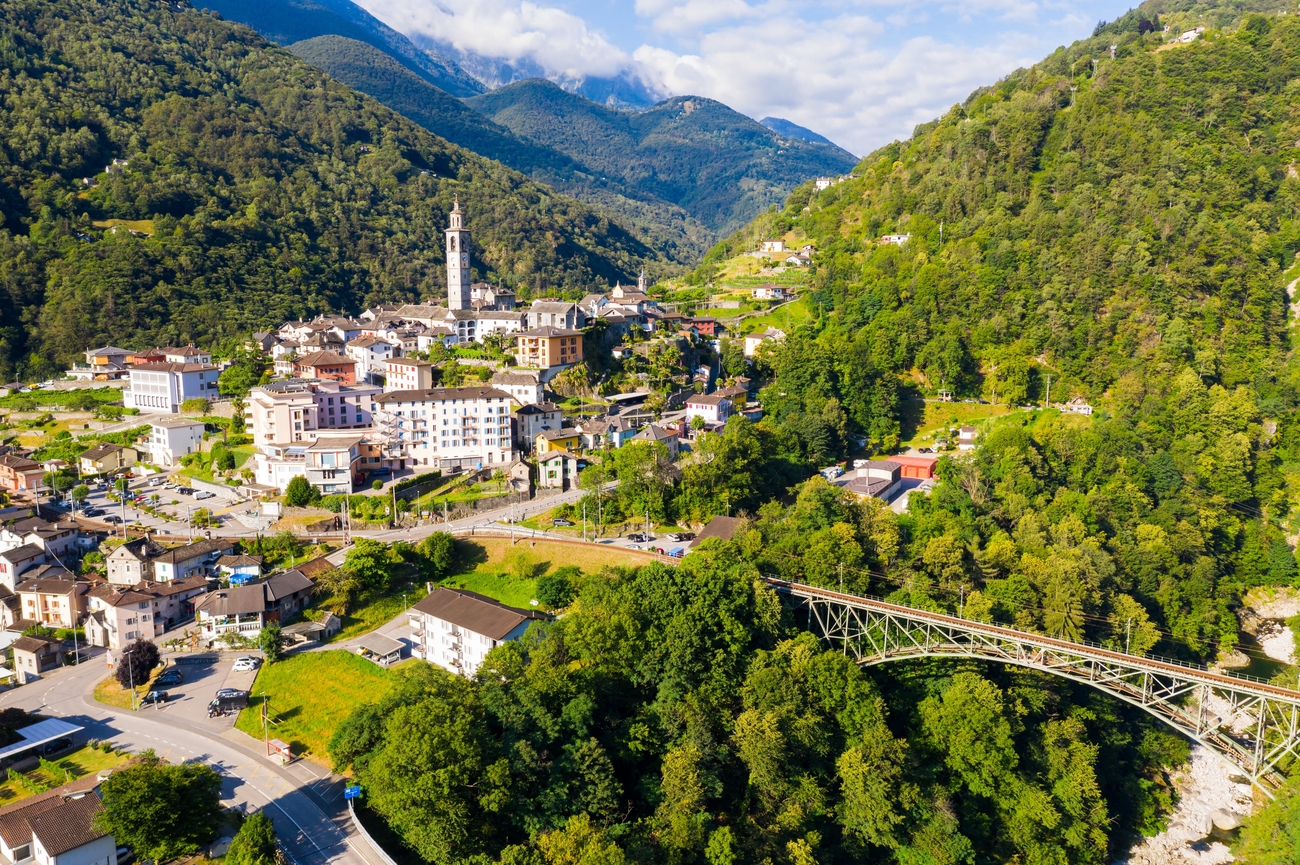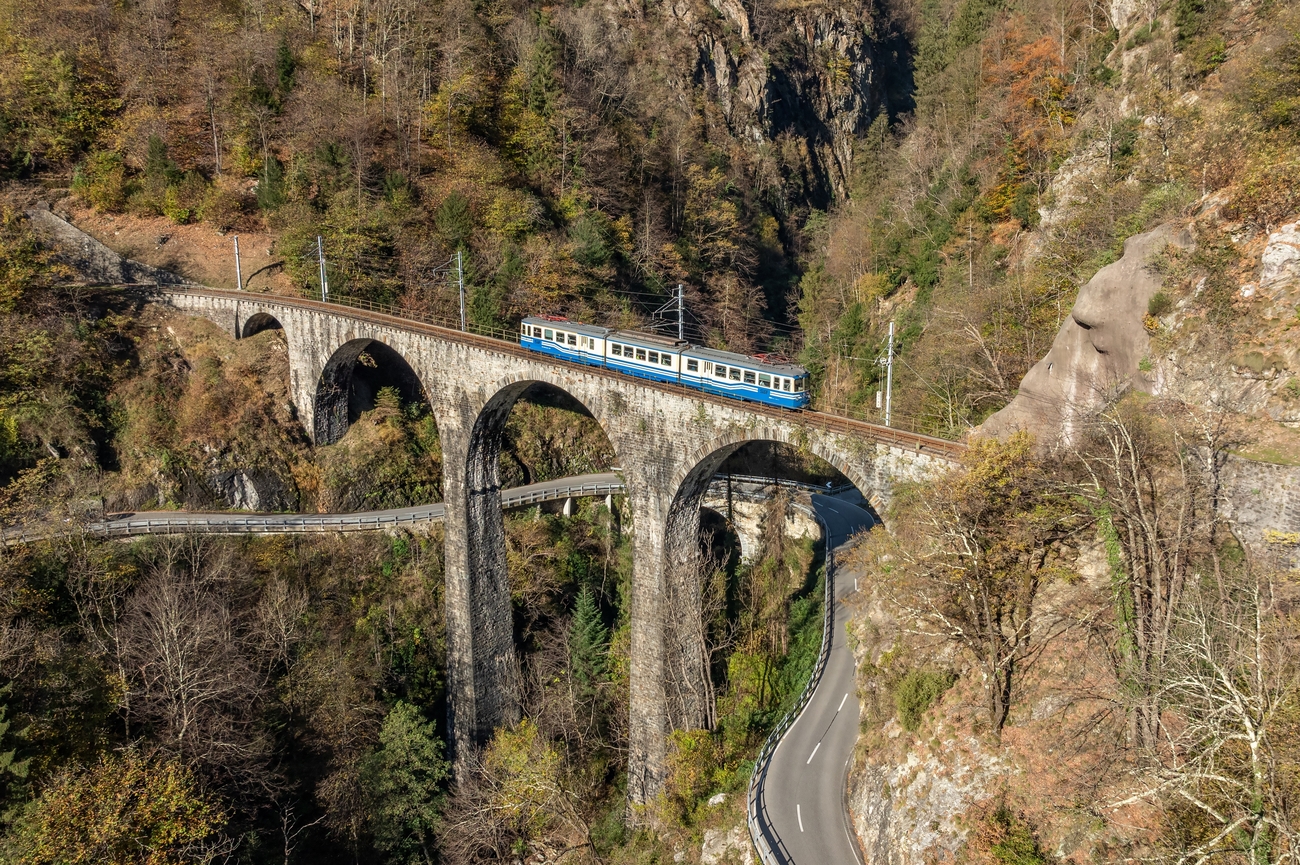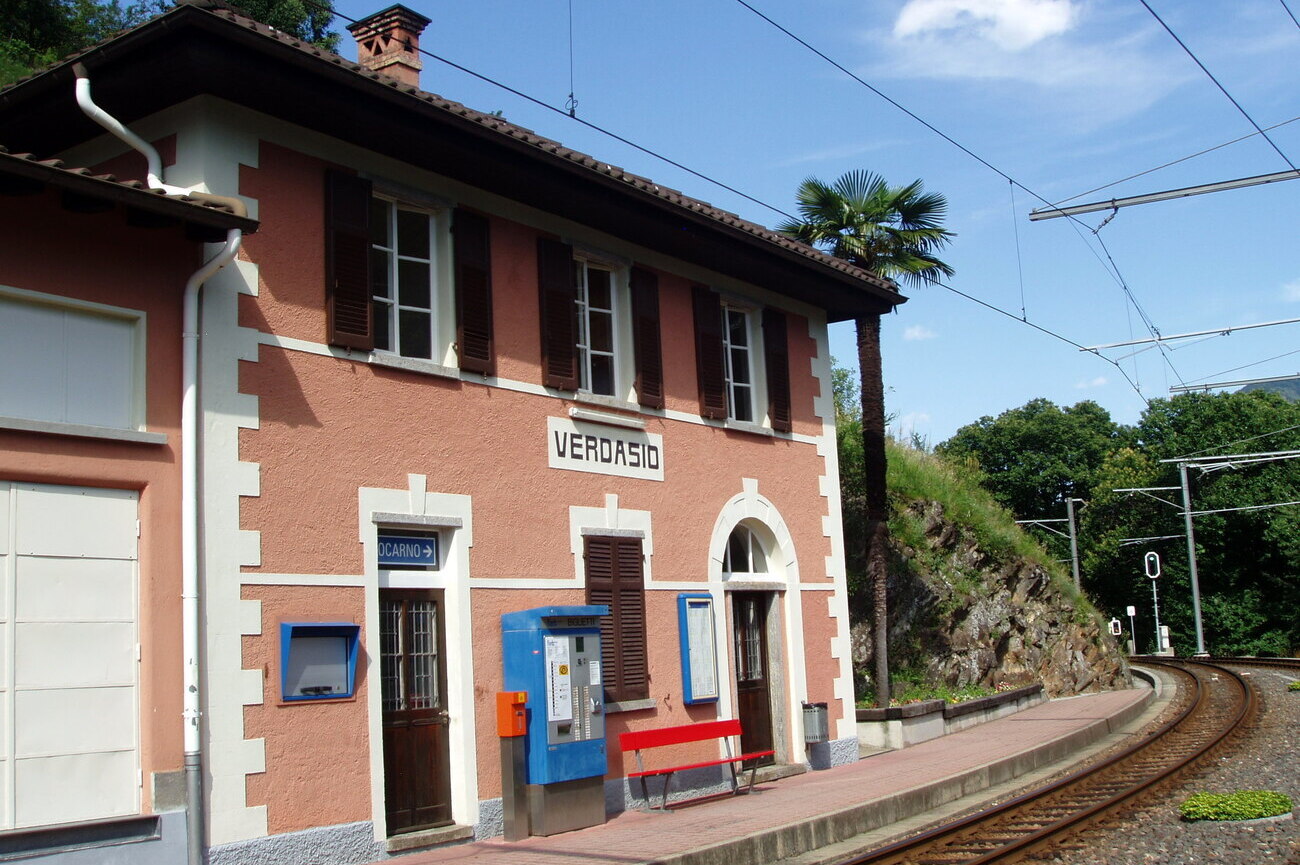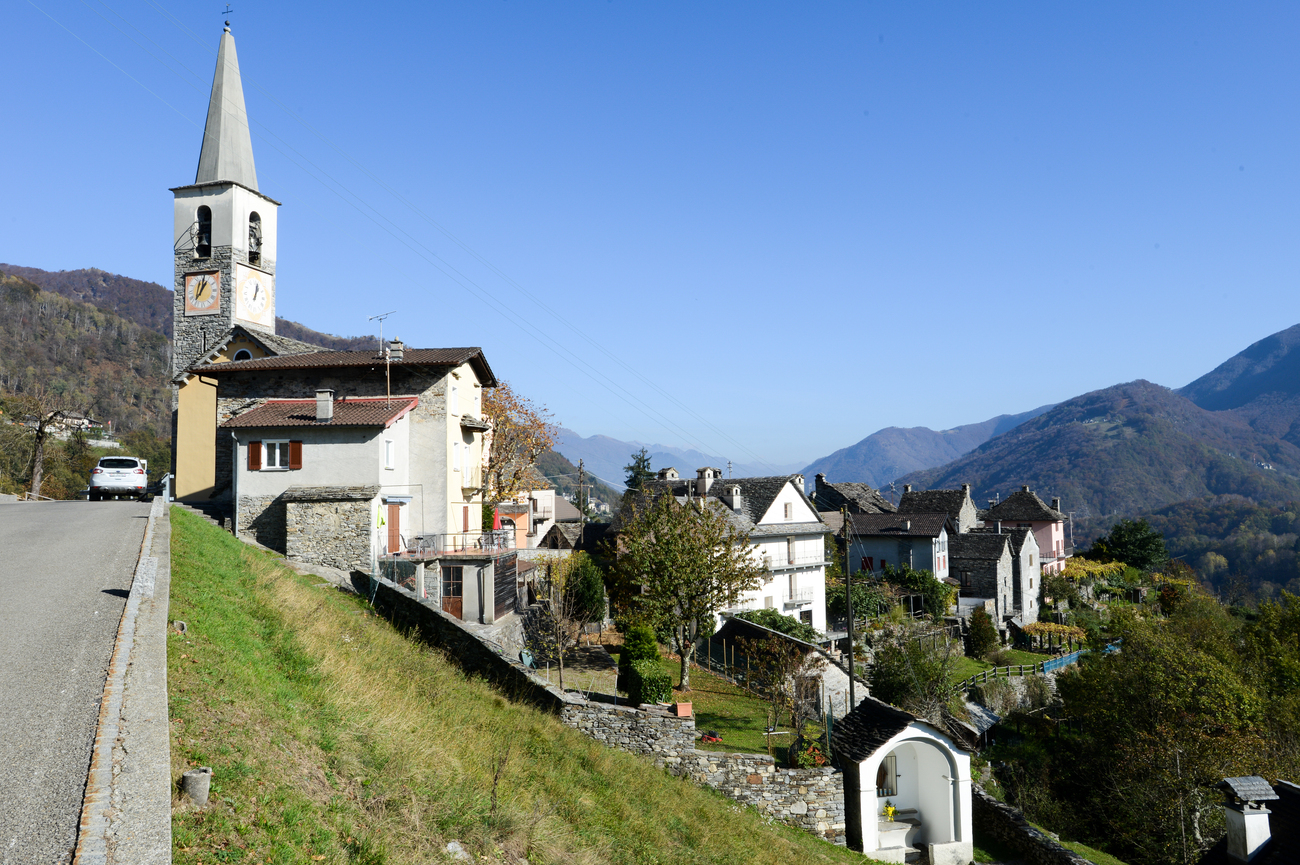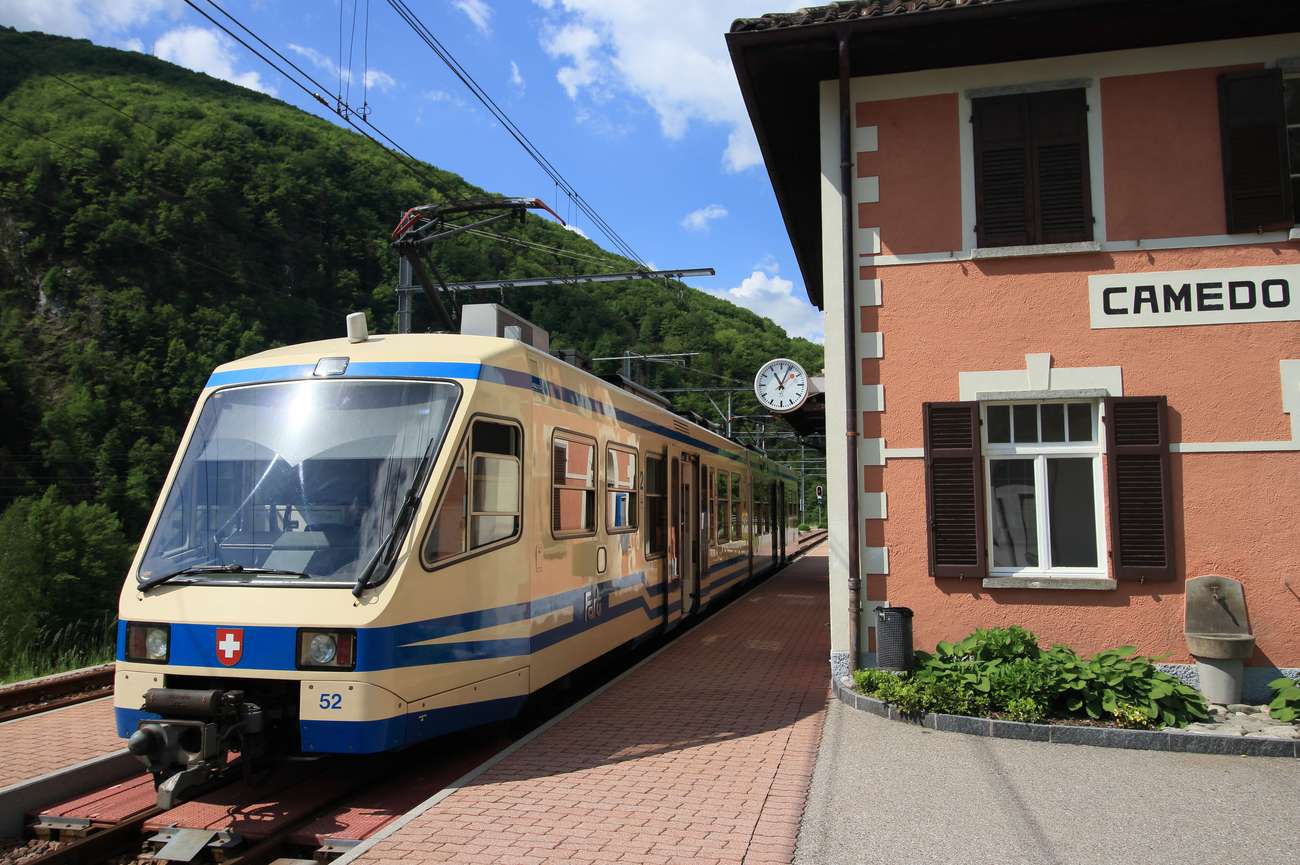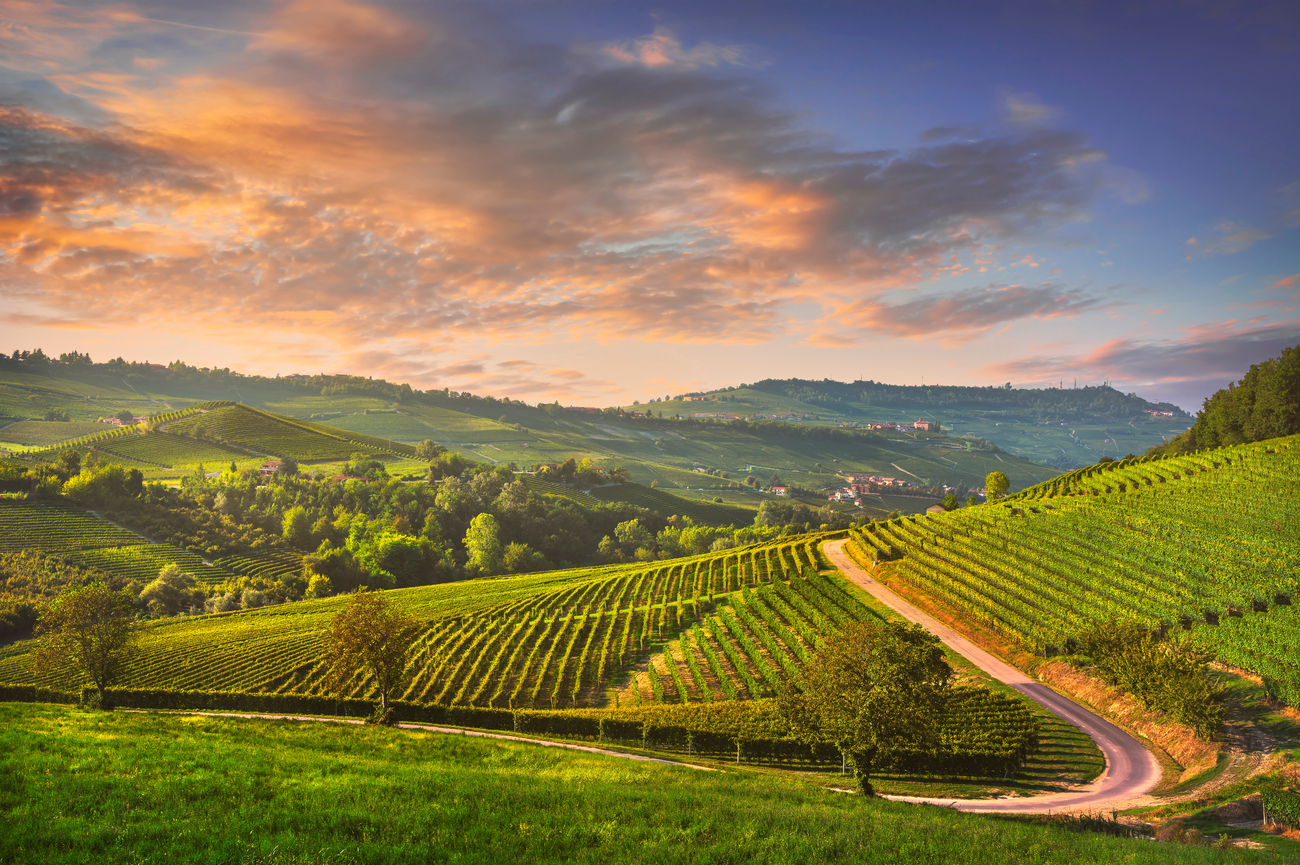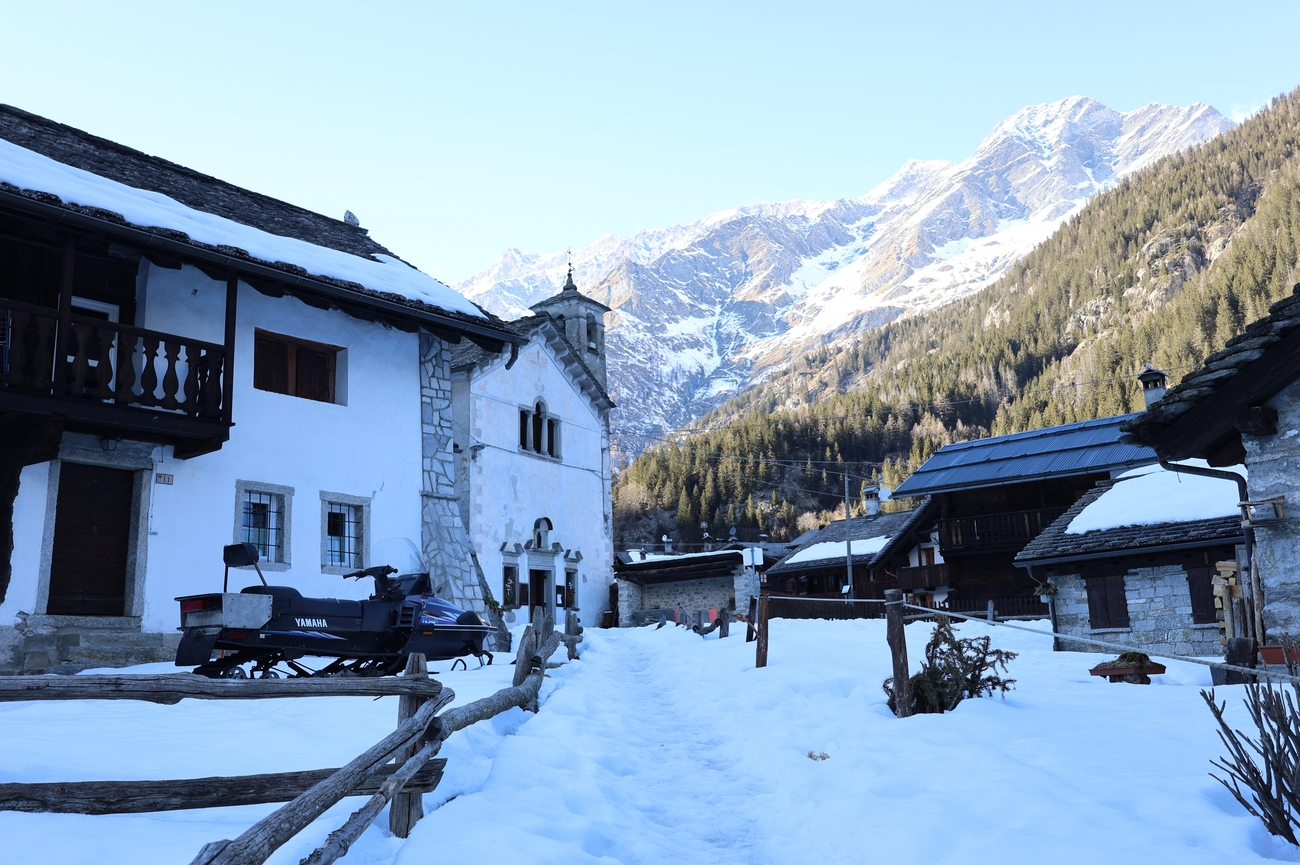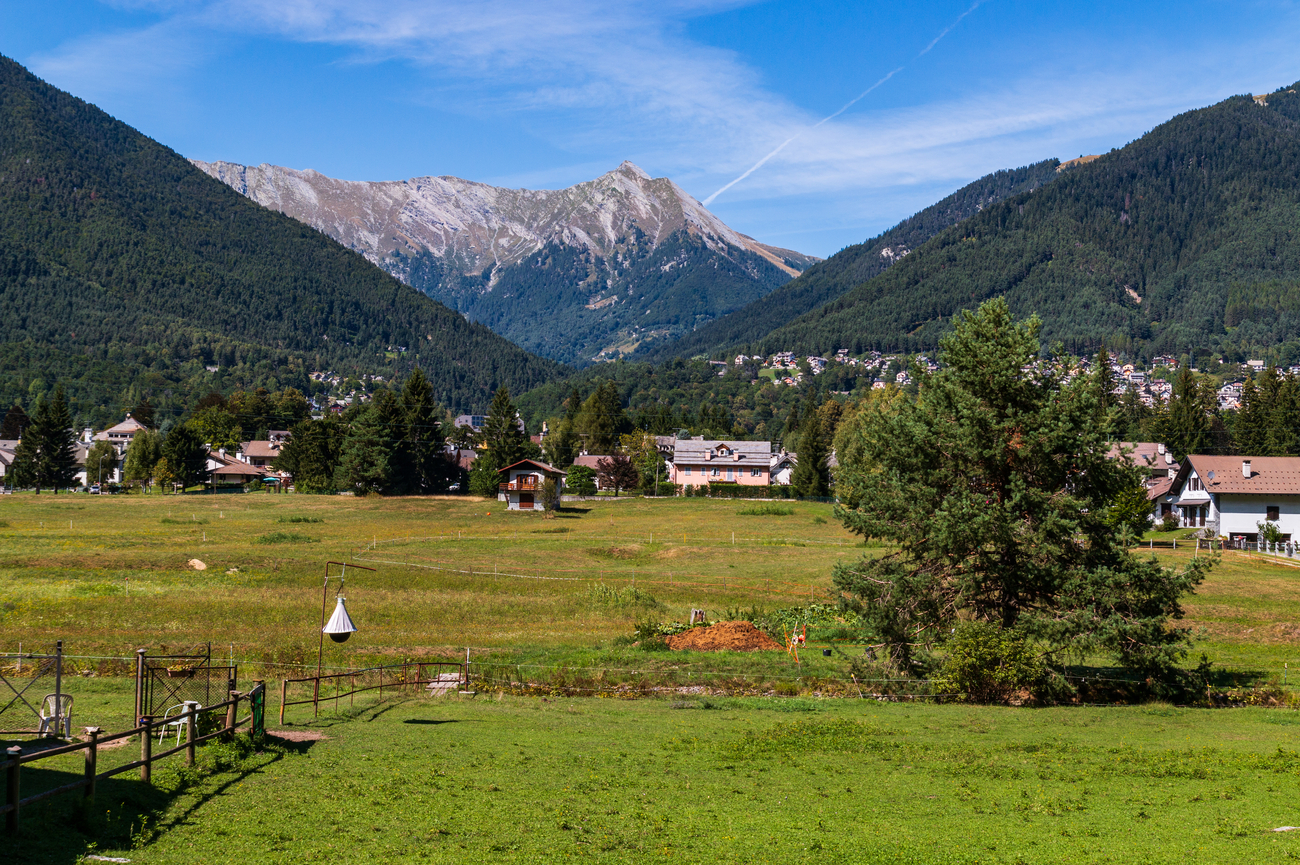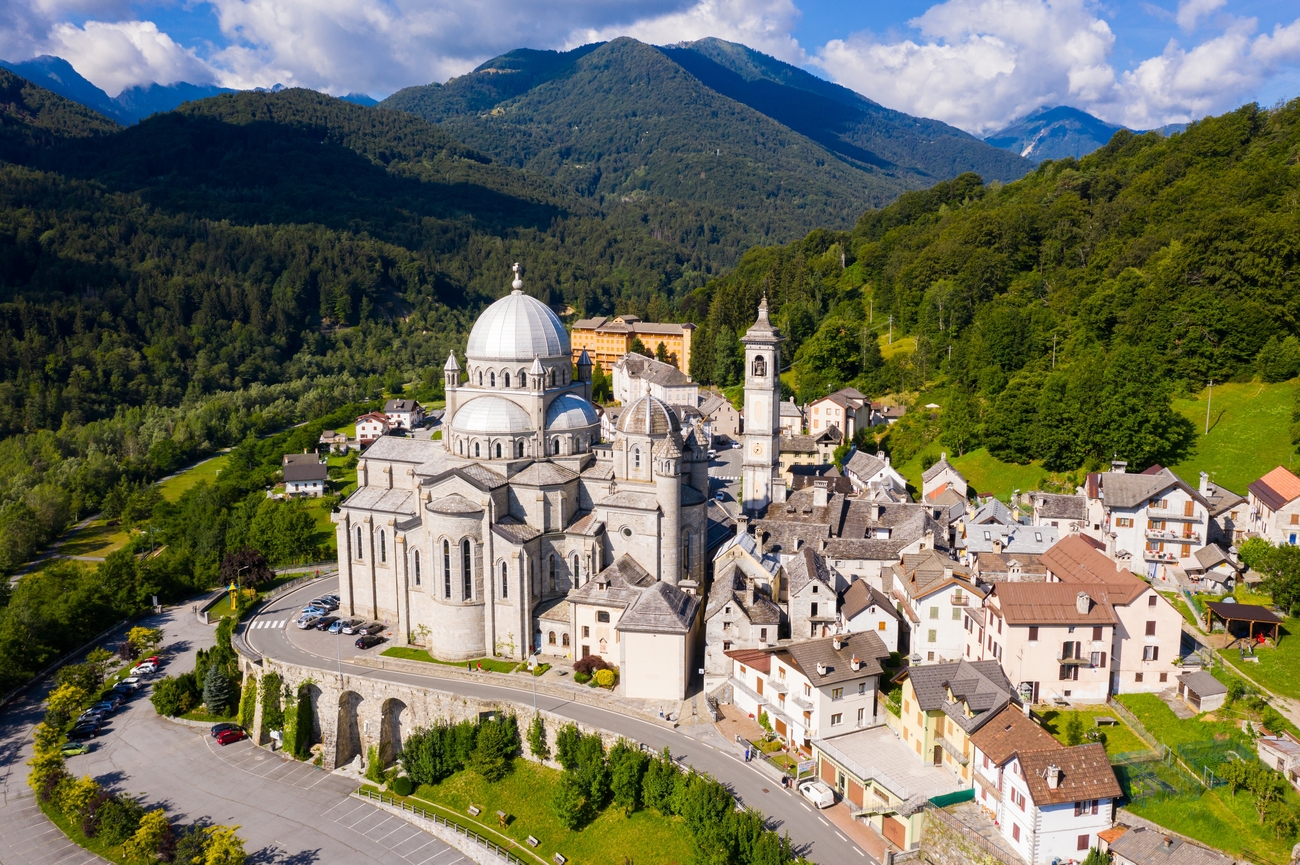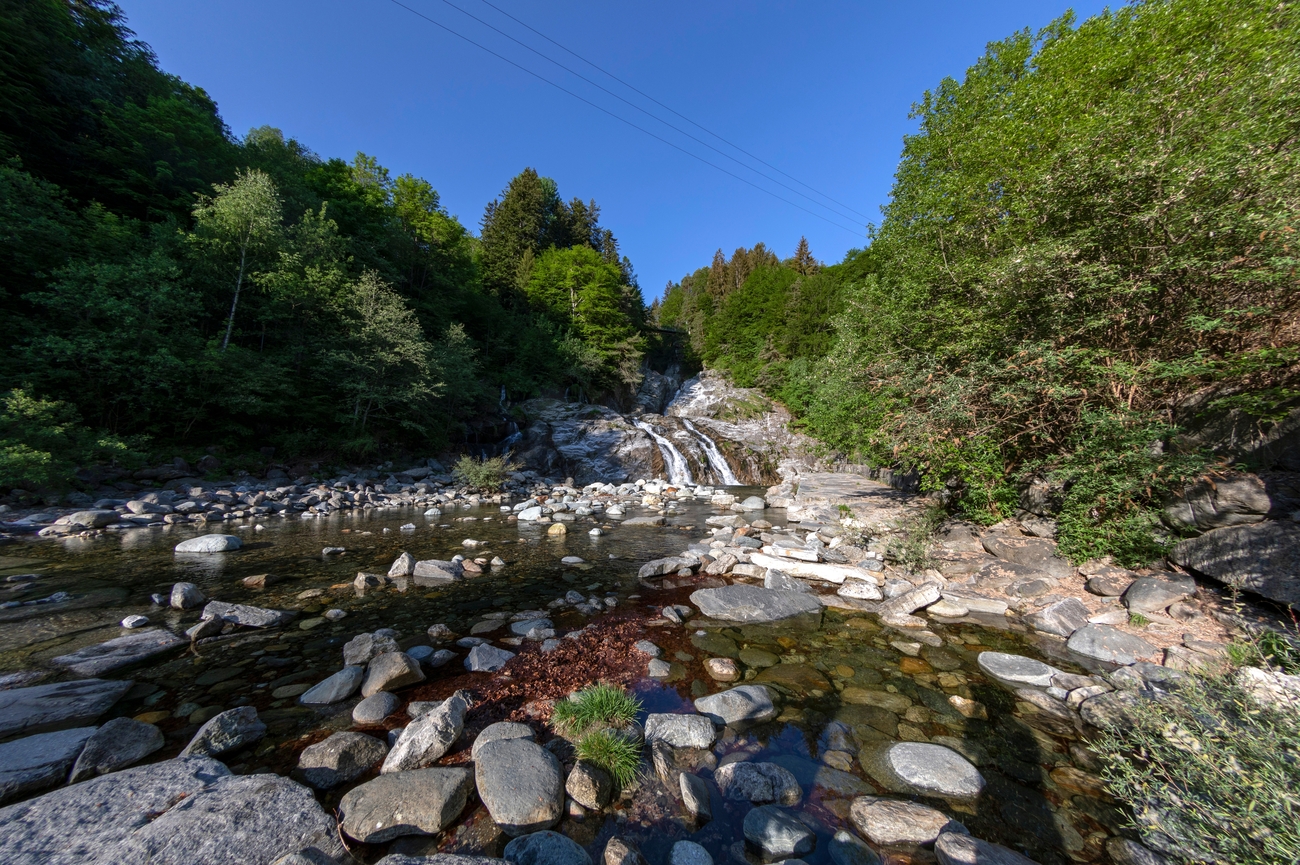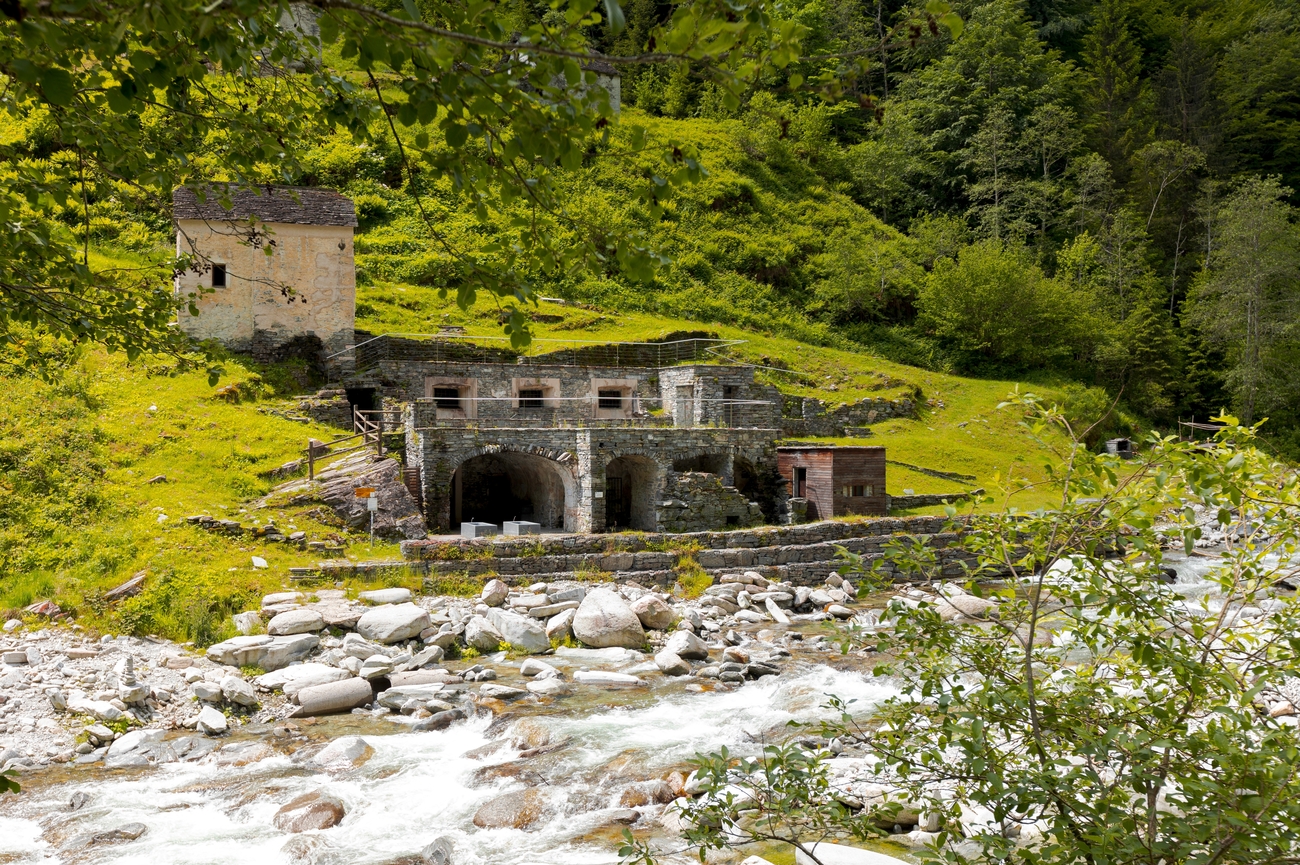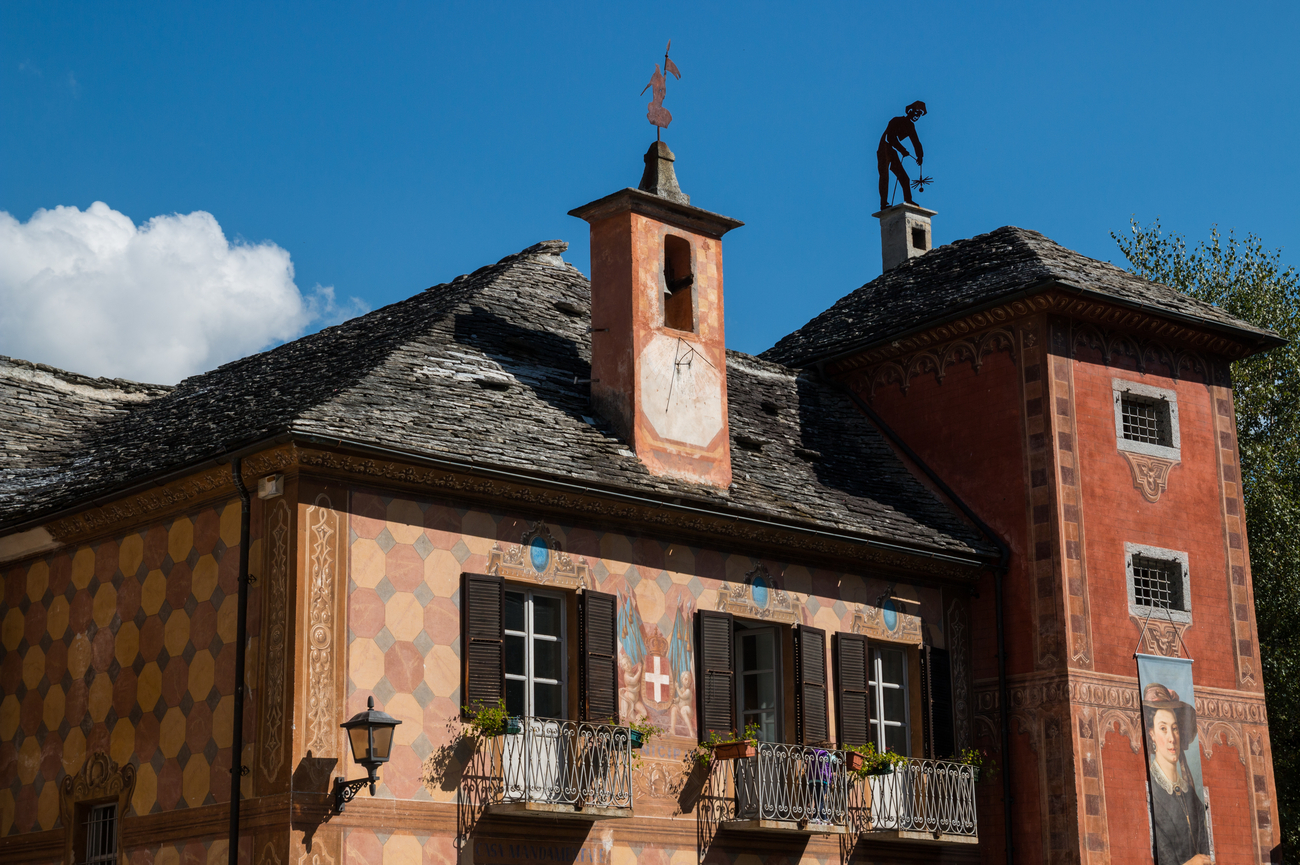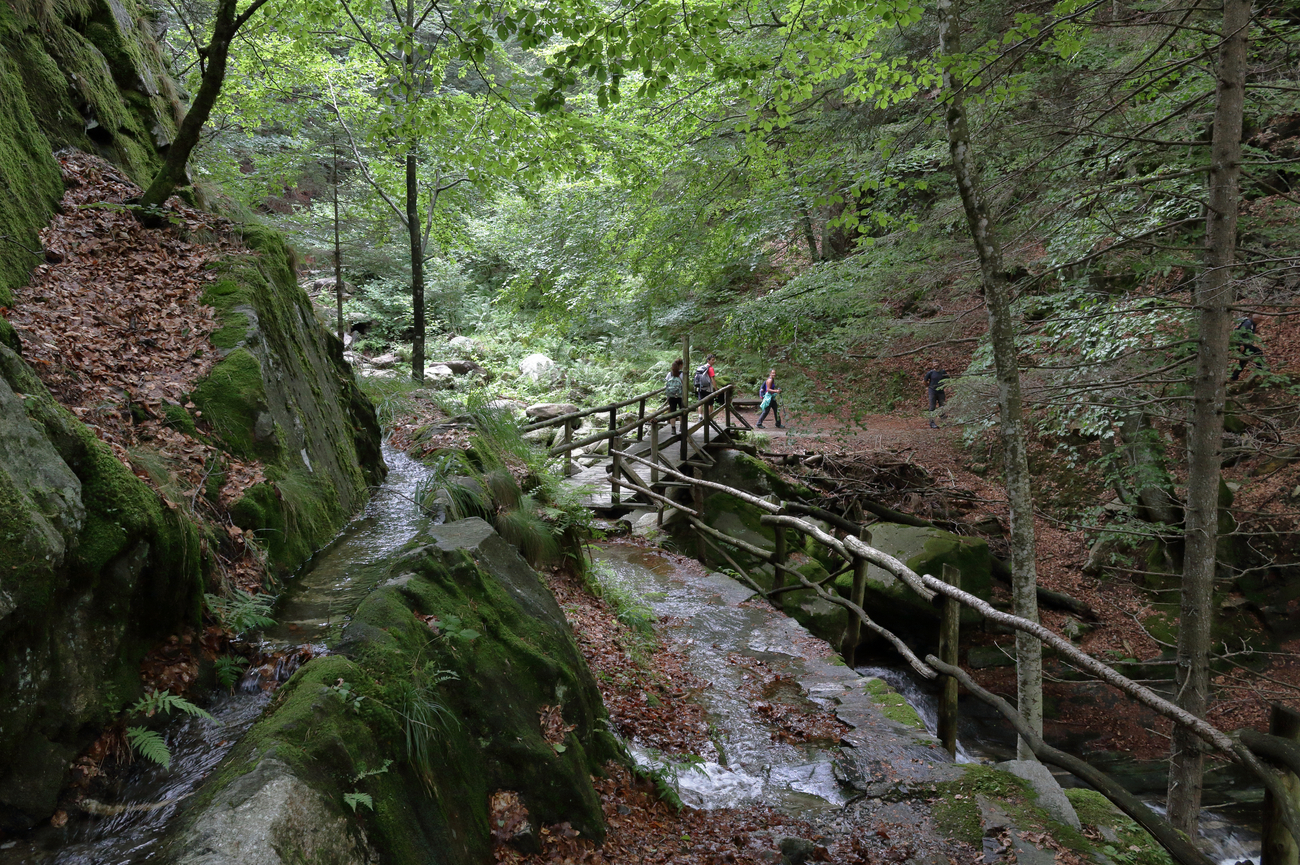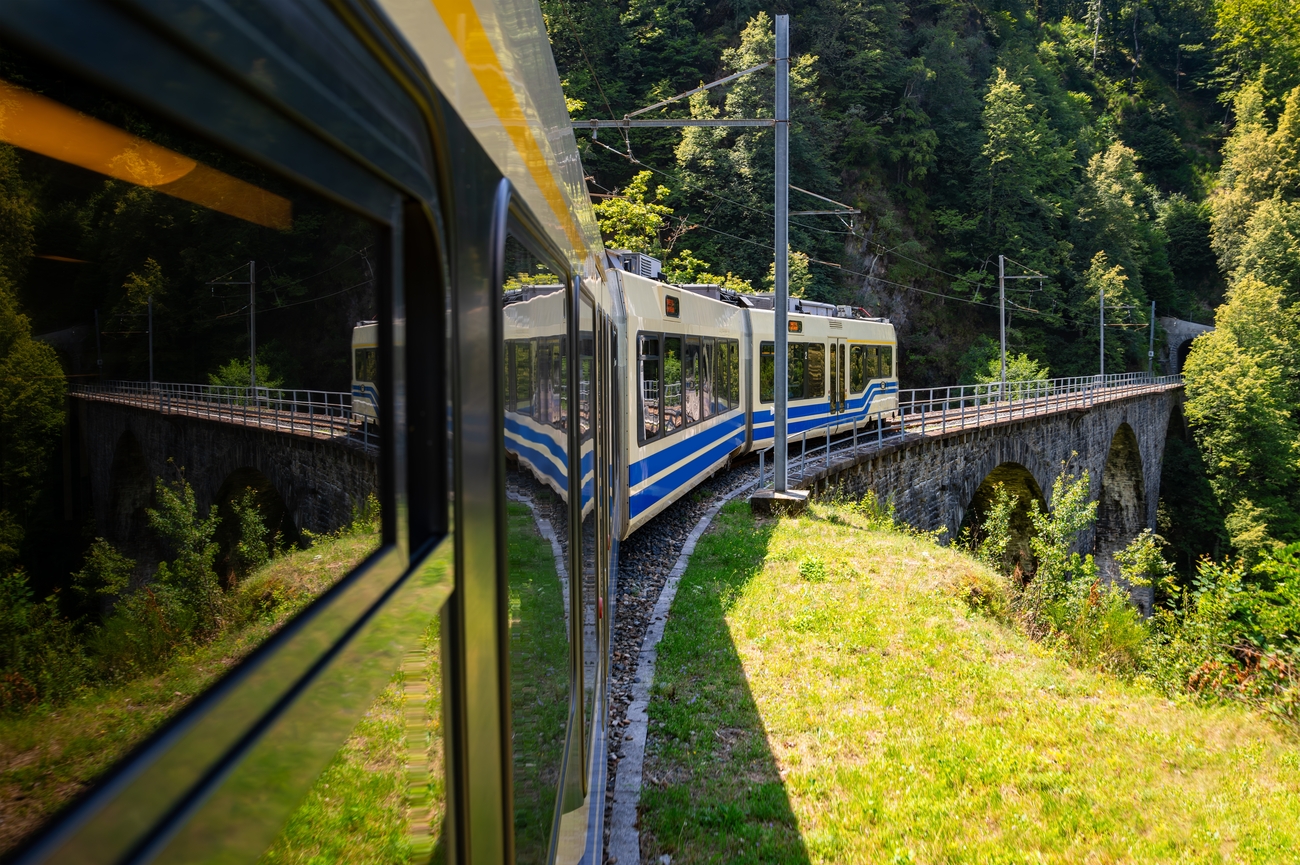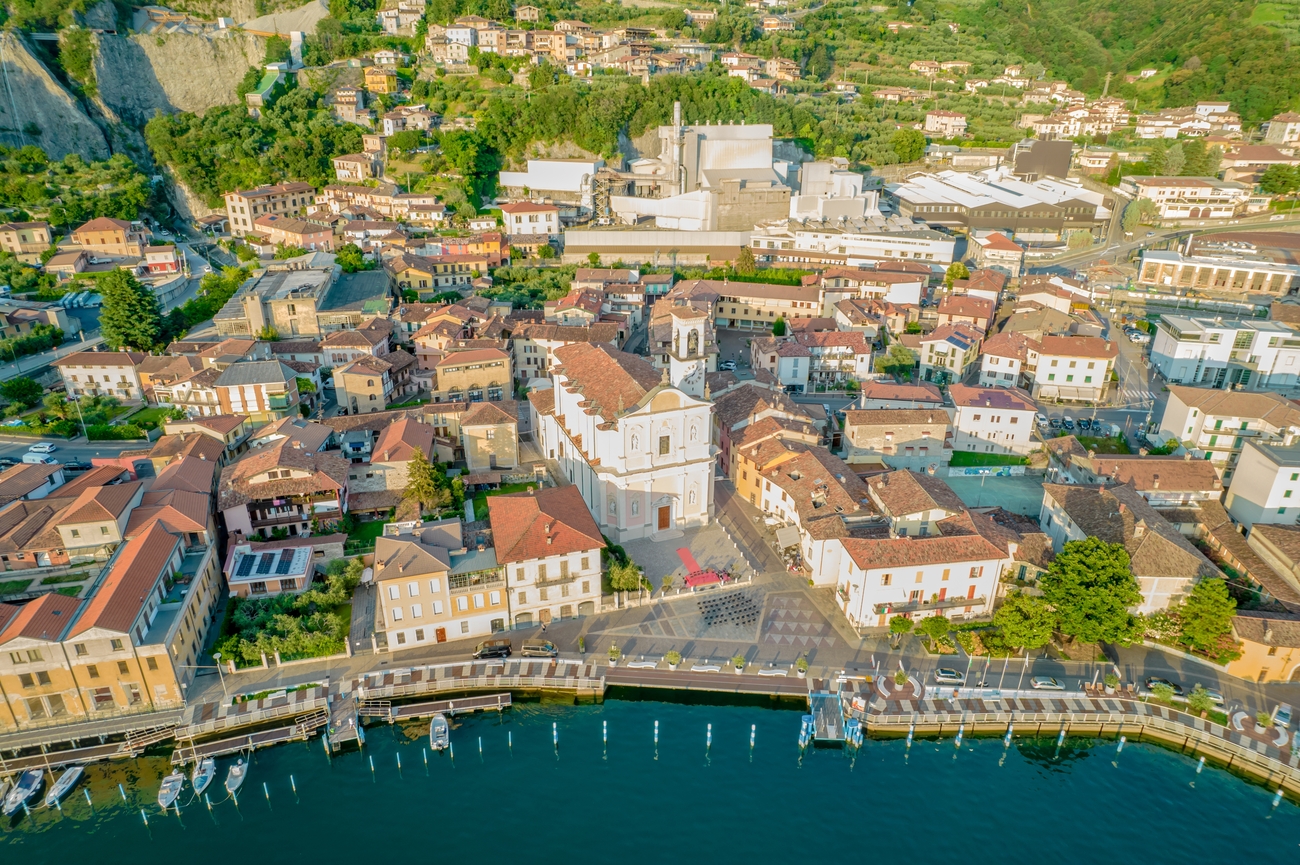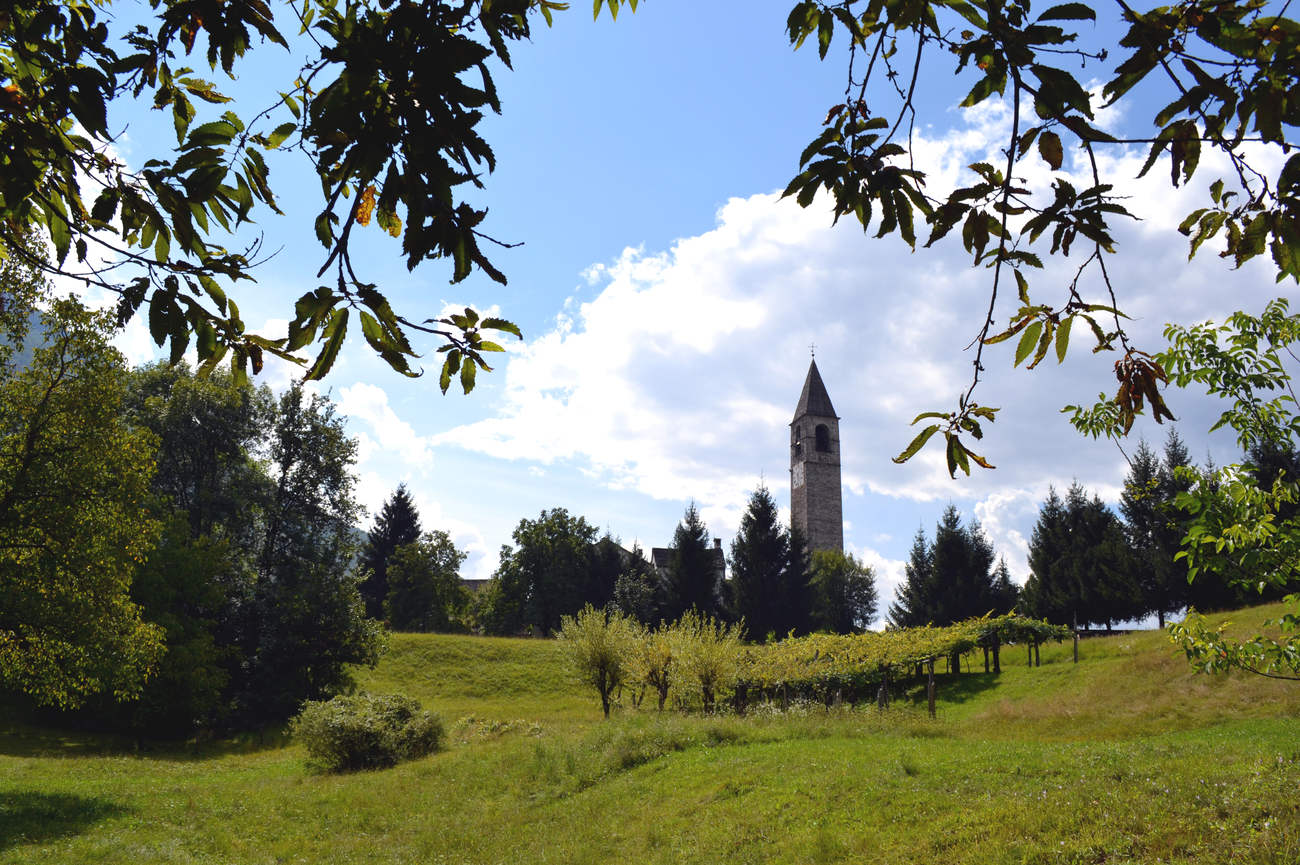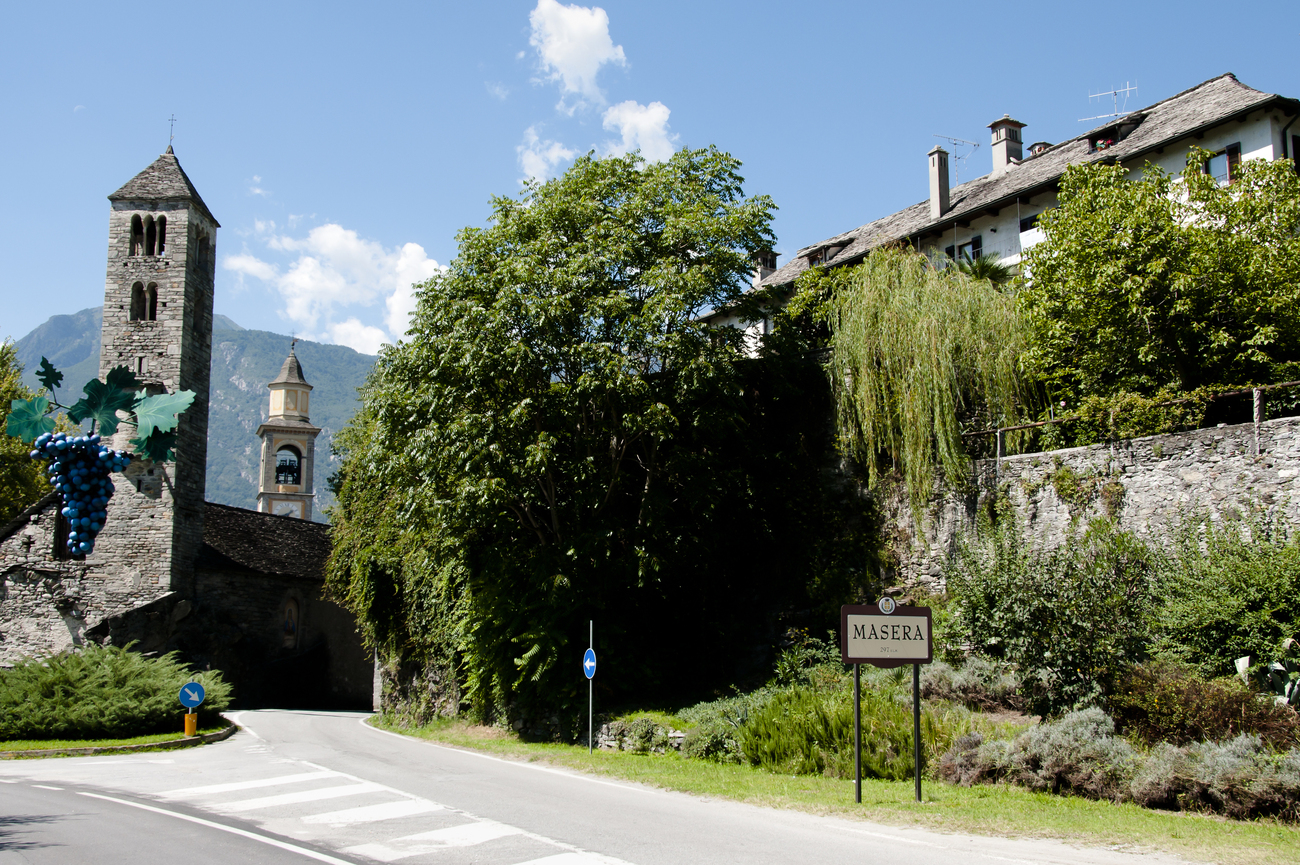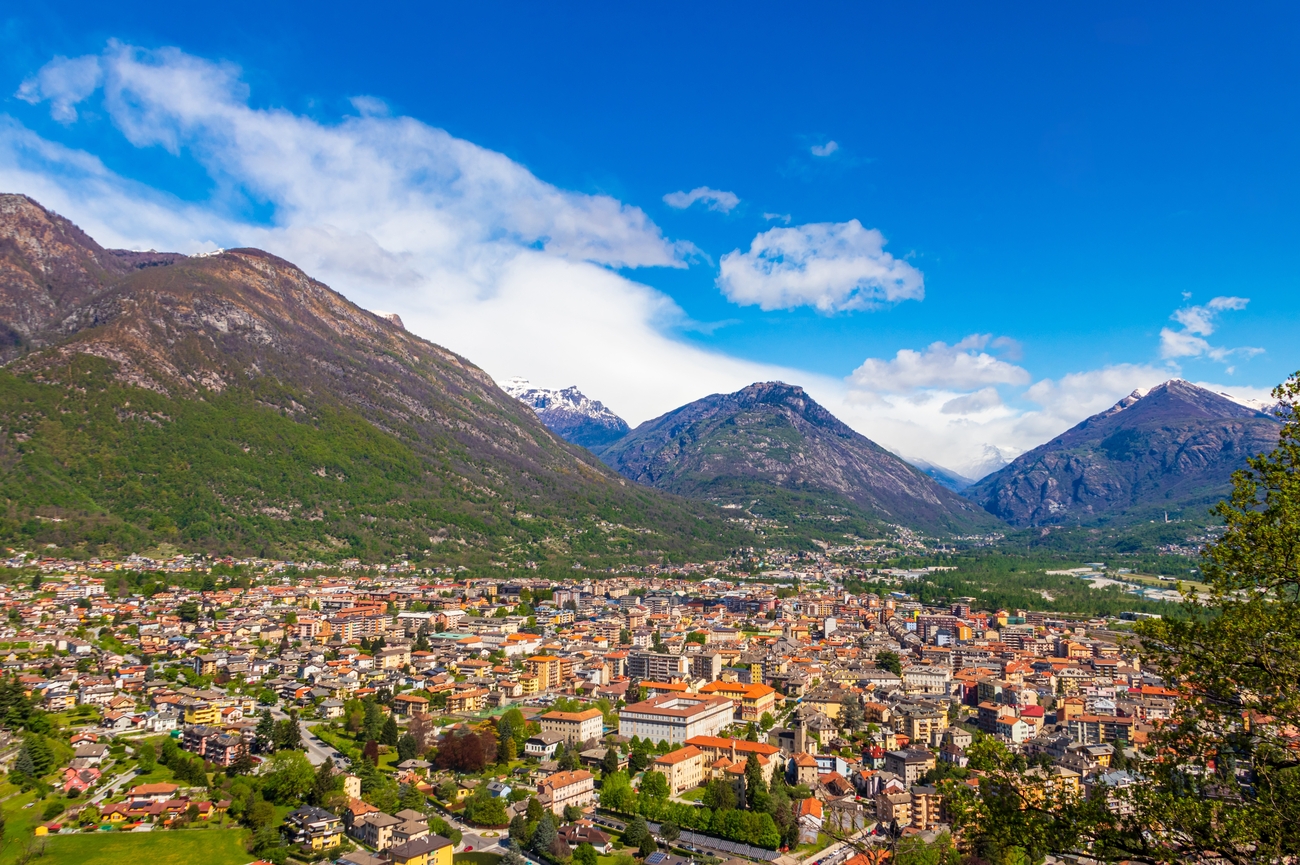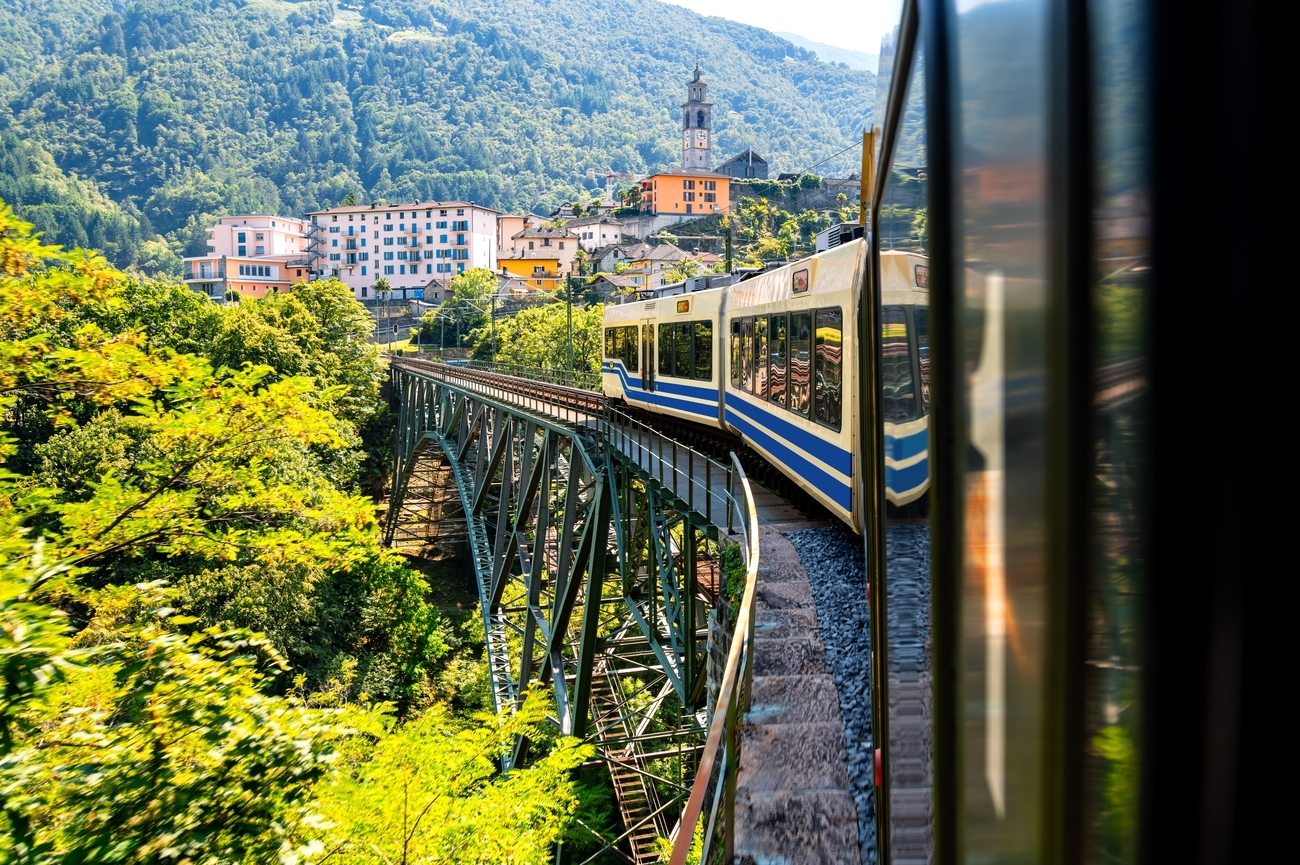Centovalli
Express: A Swiss-Italian Love Letter on Rails

It’s a jaw-dropping, gravity-defying, camera-demanding joyride through the wild heart of the Alps. This is the Centovalli Express. It’s a train that grabs you by the eyeballs and doesn’t let go. Think dizzying viaducts, postcard-perfect villages and 100 shades of green (and gold, depending on the season).
The Centovalli Express is all about taking it slow in the best possible way. It glides from Locarno in Switzerland’s Ticino region to Domodossola in Italy, through a sliver of railway that looks like it was stitched together by an alpine daydreamer with a passion for bridges, waterfalls and cliffside villages. And it’s been doing this since 1923. Yes, before Netflix, Google Maps and oat milk lattes existed.
The Centovalli line was a marvel during the time it was built. It is a narrow-gauge railway hugging the curves of the wild Valle Vigezzo, traversing 83 bridges and 31 tunnels in just under two hours.
What’s even more charming? This train doesn’t believe in playing favorites. It generously offers up scenic drama to both sides of the track: think moss-covered forests, sky-skimming viaducts and sleepy hamlets that look like they were designed by watercolor artists on holiday.
And in a plot twist worthy of a European indie film, the Centovalli Express is not technically “express” in the modern sense. No bullet speeds or red-eye deadlines here. The “express” is more of a poetic license. It’s a nod to the old-school luxury of leisurely travel.
Centovalli
Express Seats

Second
Class
In second class, the setup is cozy: 2+2 seating
arranged in friendly bays of four. Think train-table chats, card games with
friends or strangers-turned-travel-buddies. The legroom’s respectable, the
windows are massive and the vibe is easygoing. While it doesn’t come with the
elbow sovereignty of first class, second class still offers the same panoramic
windows.
First
Class
First class on the Centovalli Express is basically second class but with more space, fewer neighbors and a dash of “yes, I do deserve this.” Featuring a 2+1 seat layout, it gives you extra shoulder room, more personal space and just the right level of exclusivity. If you’re the kind of traveler who appreciates breathing room and the ability to spread out your book, snacks and existential travel thoughts, this is your carriage.
The
Secret Seat
Now for the crown jewel: the front-facing solo seat next to the driver’s cabin. It’s not in the brochure, not bookable online, and definitely not guaranteed. But oh, is it worth the hustle? This unicorn of a seat gives you an unobstructed, cinema-worthy view straight down the tracks. It’s like piloting the train... without the license or the pressure.
Want it? You’ll need to board quickly and politely
beat everyone else to the punch. Didn’t get it? Don’t fret, you can still stand
behind it (respectfully, of course) and drink in the view through the panoramic
windshield.
Centovalli
Express Itinerary

Locarno
to Domodossola
Let’s be honest, two hours on a train doesn’t usually sound like a transformative experience. But then again, most trains aren’t the Centovalli Express and most journeys don’t take you from the palm-fringed lakeside of Locarno, Switzerland, to the Renaissance-stone charm of Domodossola, Italy.
Covering just 52 kilometers, this route somehow
manages to cram in a hundred valleys (yes, literally, Centovalli means “Hundred Valleys”) and more beauty than a Swiss
chocolate commercial. It’s short on distance, long on drama. Now, let’s stop
pretending this is just another scenic route.
Locarno
Welcome to the show. Locarno is where palm trees
wave at snow-capped peaks and where Italian flavor blends effortlessly with
Swiss timing. Sitting pretty on the north shore of Lake Maggiore, this town is
known for its film festival, sunshine stats and ability to make you say “we
should’ve stayed here longer” about six times.
S. Antonio
Barely out of Locarno and you’re already making
your first stop. Don’t expect a tourist circus here, S. Antonio is small, sleepy, and superbly scenic. Think
grapevines, garden plots, and the occasional curious cat blinking at the train
like it’s judging your outfit.
Solduno
Another quiet exhale before things start getting
vertical. Solduno is more of a wink than a wave. Technically a suburb of
Locarno, but with just enough rustic charm to feel like its own postcard. The
houses are stone, the hills are green, and the rhythm is distinctly “please
slow down.”
San Martino
At San Martino, the train starts teasing you with
its true potential. Hills rise, cliffs edge closer and suddenly that window
seat feels like front-row access to a nature documentary. Blink a little
slower, you’ll want to catch the shadows shifting on the rocks.
Ponte Brolla
Now we’re talking drama. Ponte Brolla hangs above
gorges carved by the Maggia River, with sheer granite walls and swimming holes
that double as local thrill-seeker playgrounds. The cliffs here are so
striking, even the train seems to pause and stare. And yes, people do cliff
dive here. And no, you shouldn’t unless your idea of a good holiday involves
defying gravity.
Tegna
Just a short hop from Ponte Brolla, Tegna has
weekend escape written all over it. Riverside beaches, mellow hiking trails,
and that “we brought our own picnic” energy. You won’t be stopping long, but if
peace and pine needles could be bottled, this would be the source.
Verscio
Art school meets alpine village. Verscio is home to
the Teatro Dimitri, a performing arts school that churns out clowns, dancers
and storytellers with a view. The vibe? Intellect in hiking boots. It’s the
kind of place where someone might offer you organic goat cheese and a mime
show.
Cavigliano
Cute? Check. Quieter than your thoughts after a
long hike? Double check. Cavigliano is full of terraced hillsides and cozy
homes with flower boxes that are, frankly, showing off. You’re not here long,
but the vibe lingers.
Intragna
It’s got the tallest bell tower in Ticino (80
meters, and yes, the locals are proud), a rope bridge and stone houses that
whisper old-world secrets. Intragna is where you start realizing: this train
ride is less about getting somewhere and more about feeling somewhere.
Corcapolo
The train slows down and the trees part. You lean in. Corcapolo doesn’t make a fuss, it
just hands you moss-covered roofs, deep valleys and the occasional cow chewing
like it owns the place. The population is small, the charm is giant and the
silence is loud in the best way.
Verdasio
Meet Verdasio, gateway to one of Switzerland’s most
exclusive club memberships: villages you can only reach by cable car. This is
your launch point for Rasa, a tiny, car-free hamlet perched high above the
valley like it’s hiding from modern life and winning.
Palagnedra
This stop has drama in its DNA. Palagnedra sits
near a dam, a lake and a backdrop of densely forested slopes that seem to wrap
the village like a scarf. It’s wild and just remote enough to make your phone
signal rethink its priorities. Oh, and the Palagnedra Dam? Built in 1952, it’s
still doing the heavy lifting when it comes to hydropower and Instagrammable
reflections.
Borgnone–Cadanza
Two names, one vibe: blink, breathe, marvel. This stop is a double act of sleepy stone villages tucked into the landscape like they’ve been gently pressed into place by a mountain god with impeccable taste. Blink too quickly and you’ll miss it. But slow down and you’ll catch glimpses of slate roofs, chestnut trees and shutters that haven’t changed since the 1800s.
Camedo
This is it: the final Swiss stop before you wave
goodbye to chocolate-scented efficiency and glide into Italian flair. Camedo
has a frontier-town feel without the tumbleweeds. Just tidy gardens, rolling
fields and a small customs post that’s more symbolic than strict. It’s your
last sip of Swiss air, so savor it.
Ribellasca
Ciao, Italia! Ribellasca
sashays onto the scene. The hills
soften, the buildings warm up and suddenly everything’s just a touch more
golden. This stop is mostly rural with a side of “yes, that’s a vineyard.”
You’re in Piedmont now, and even the clouds seem to relax.
Isella-Oglia
Isella-Oglia is all rustic charm and rolling farmland, tucked under layers of
green. Don’t expect a cafe on every corner,
expect silence, solitude and a view you won’t shut up about later.
Folsogno-Dissimo
More hyphen, more heritage. These twin villages are
perched along the Vigezzo Valley, surrounded by thick woods and cobbled paths
that look like they were designed for slow-motion film sequences. The train
slows here, and so will your heartbeat (in the best way).
Re
Small name. Big miracle. In 1494, someone chucked a
stone at a fresco of the Virgin Mary here. The painting bled. Bled. Naturally, they built a basilica
over it and today, Re is a
full-blown pilgrimage hotspot, with the Santuario della Madonna del Sangue as
its centerpiece. Even if you’re not feeling spiritual, the dome alone is worth
the neck strain.
Villette
Not to be confused with Parisian neighborhoods,
this Villette is pure alpine poetry. Tiny, tidy and surrounded by chestnut
trees, it’s the kind of village that makes you reconsider your relationship
with concrete. Bonus points if you spot the local goats looking smug in their
hillside kingdom.
Malesco
Finally, a proper village with shops, cafes and that low-key “I could totally live
here” feeling. Malesco is the largest town in
the upper Vigezzo Valley and a natural gateway to Val Grande National Park,
Italy’s wildest and most untouched wilderness. Hikers love it, artists adore it
and the Centovalli Express rolls through it like it’s the star of its own
landscape painting.
Zornasco
Zornasco is the kind of place that winks and
vanishes. It’s tiny, tucked into a slope and known more for what surrounds it
than what’s in it. Think forest shadows, stone barns and that crisp alpine hush
that makes your phone feel unnecessary.
Prestinone
Another humble hillside hero, Prestinone isn’t here
to shout. It’s here to hum, with old rooftops, mossy footpaths and views that
look suspiciously computer-generated. It’s also the kind of place where you
could spot a grandpa herding goats… or painting them.
Santa
Maria Maggiore
Cue the spotlight. This is the cultural capital of
the Vigezzo Valley. Santa Maria Maggiore brings life to the route with art
museums, charming cafes and
artisan boutiques. It’s home to the Chimney Sweeps’ Museum (yes, that’s a
thing) and the whole town feels curated for daydreams. Step off here if you’re
craving espresso, gallery-hopping or an argument with yourself about buying
locally woven wool.
Buttogno
Buttogno is like the soft acoustic version of Santa
Maria Maggiore. It’s smaller, quieter, cozier. The kind of place where
everything moves slower, from the clouds to your own thoughts. If this stop had
a motto, it’d be: “Shhh, we’re meditating.”
Druogno
With a few more people and a dash of bustle,
Druogno feels like a proper mountain town. There are school, shops, hiking
trails and enough open space to stretch your legs and existential questions.
It’s also the site of local summer camps, so don’t be surprised if it smells
faintly of sunscreen and childhood nostalgia.
Gagnone-Orcesco
Another charming double-act. Gagnone-Orcesco keeps things classic with narrow
lanes, sloped rooftops and postcard views that make you mutter, “Okay, that’s
it! I’m moving.” The hills roll, the trees wave and the train just keeps
gliding like it owns the place.
Coimo
With its slate roofs and stone houses, Coimo feels
frozen in time in the best possible way. It’s rustic, remote and refreshingly
unbothered. If this stop had a scent, it’d be woodsmoke and cool fog. It’s
quiet enough to hear your thoughts and scenic enough to want to write them
down.
Marone
Marone is one of those “you had to be there” moments. The vibe? Earthy, authentic and untouched by tourism. It’s the kind of place you fantasize about stumbling upon during a wrong turn on a solo hike.
Verigo
A rustic curve in the line, Verigo is the last
whisper of wilderness before the valley begins to open up. It’s humble, hilly
and honest like a dog-eared page in a travel journal.
Trontano
Trontano starts turning up the tempo again. More
houses, more locals, more signs that you’re nearing a bigger town. It’s a sweet
rural hub that plays host to festivals, folk events and serious mountain pride.
Trontano’s a reminder that this journey may be small in distance, but it’s huge
in soul.
Creggio
Creggio is a blink, a breath, a whisper of stone
and greenery. It may not come with bells and whistles, but it’s part of the
rhythm. The homes here seem to grow from the hillside and the trees? Always
standing at attention.
Masera
Just before you hit the finale, Masera rolls out the red carpet in the form of terraced vineyards and golden sunlight. This is where the valley floor stretches out, the peaks pull back and the wine starts talking. It’s a soft, scenic landing before the big arrival.
Domodossola
Here we are: Domodossola. The grand finale.
Renaissance arches, cobbled streets, piazzas you’ll want to nap in. It’s a
full-on Italian exhale. Sitting at the foot of the Alps, this cross-border
market town is where cultures meet, trains converge and your Centovalli journey
drops the mic.
Where Centovalli Train Will (and Won’t) Stop
The Centovalli Express might only run 52 kilometers, but it packs in a generous 33 stops along the way. Now, before you assume the train will be hitting the brakes at every single one, hold that thought. Only some of those stations are guaranteed full stops. Places like Locarno, Santa Maria Maggiore and Domodossola are on the must-stop list. The rest? They’re known as request stops.
Here’s how that works: if you're on the train and want to hop off at a smaller village (say, Verigo or Folsogno-Dissimo), just press the “stop on request” button in advance. If you're waiting on the platform, give the driver a friendly wave. If no one signals, the train glides through without stopping. No drama, no delay, just Swiss-Italian efficiency in action.
So yes, there are 33 stops, but unless someone speaks up or waves down the train, some
of them are just scenic cameos. Want to get off? Hit the button.
Ready
to ride the Centovalli Express?
Let us craft your perfect Swiss–Italian escape—with the best views, secret stops, and local flavour included. Tell us when you’d like to travel, and we’ll take care of the rest.


Let us know what you love, where you want to go, and we’ll design a one-of-a-kind adventure you’ll never forget.
Get in touch
Miriam
Europe & Africa Expert

Romina
Europe & Africa Expert

Catiane
Europe & Africa Expert
Our offices:

